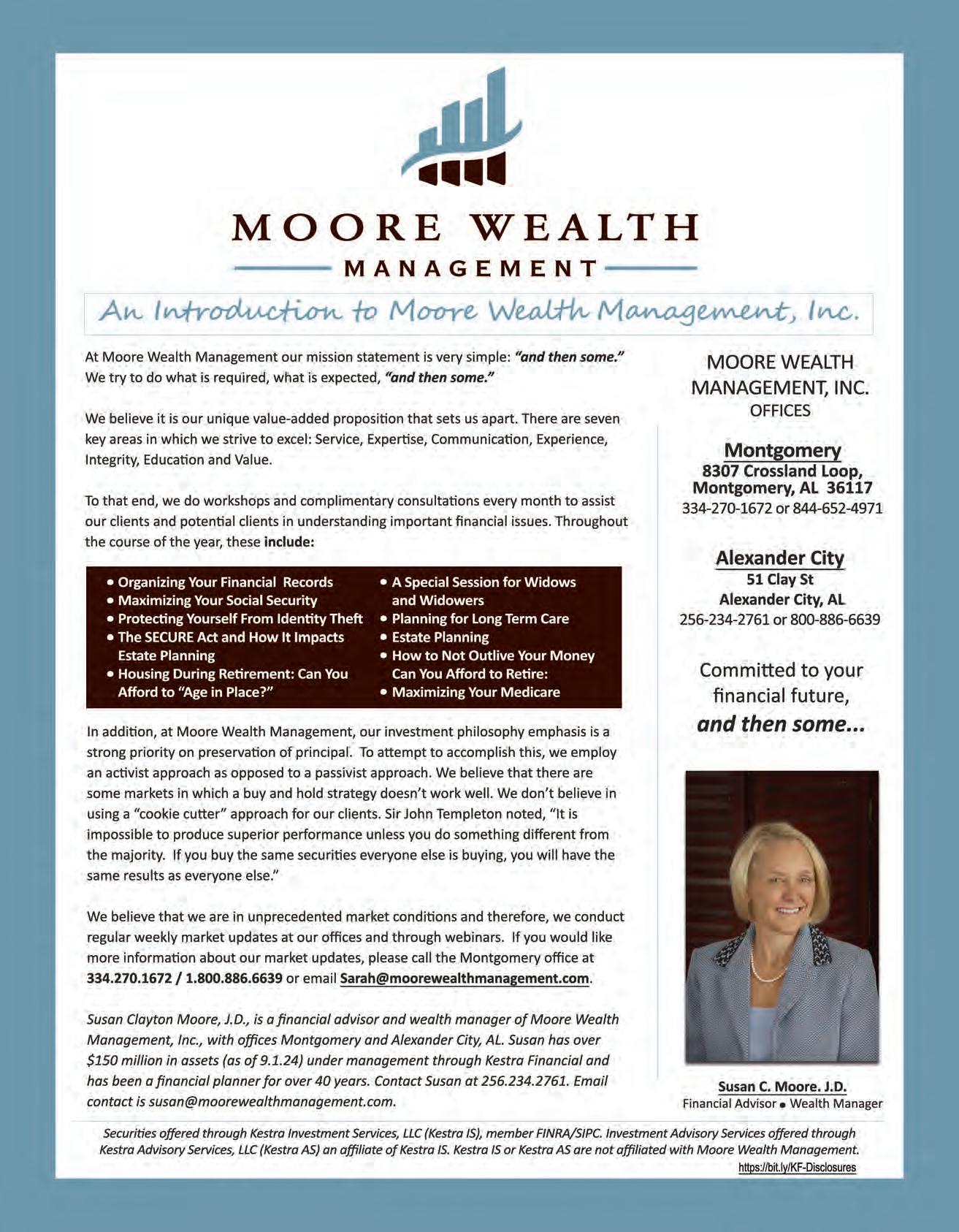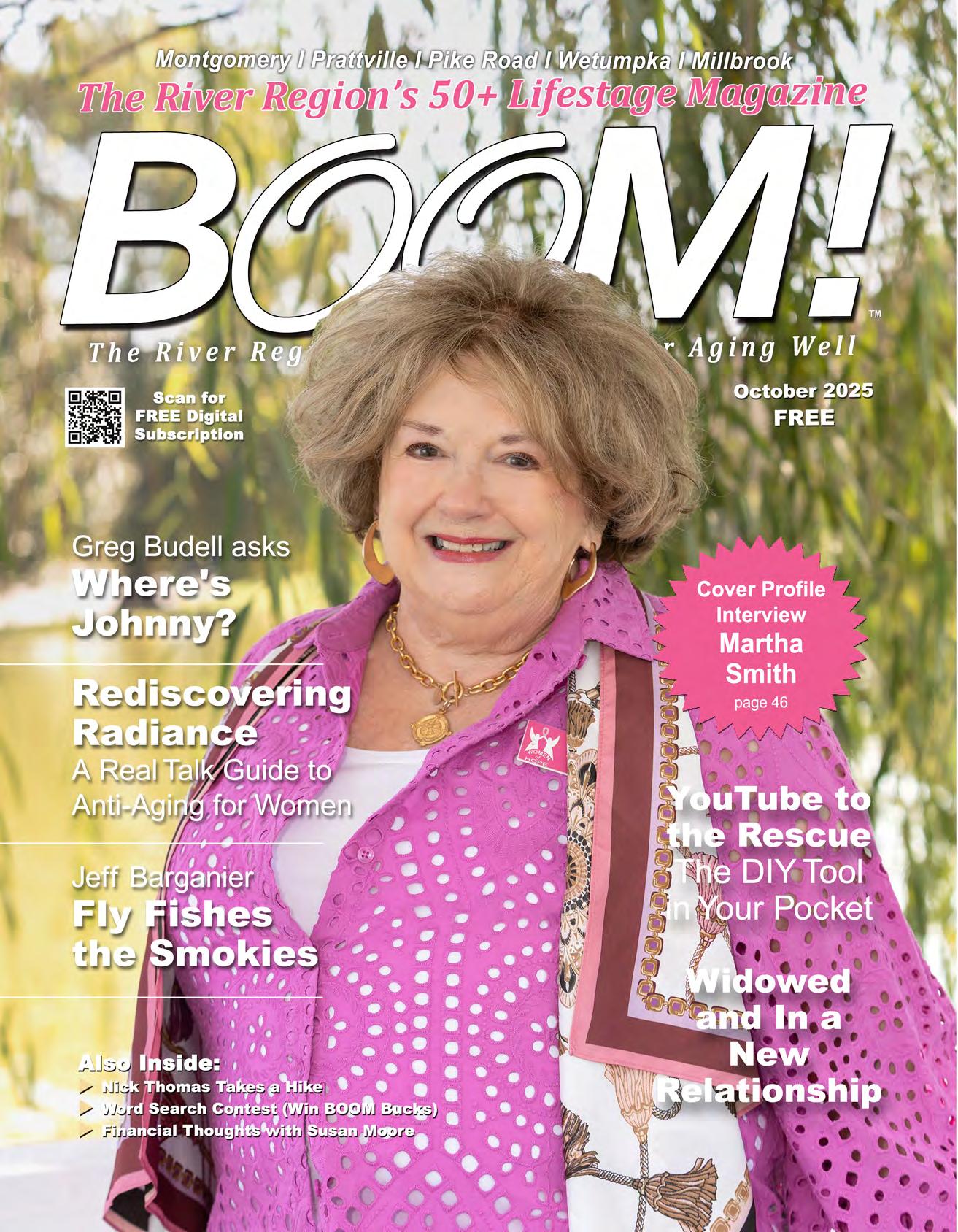
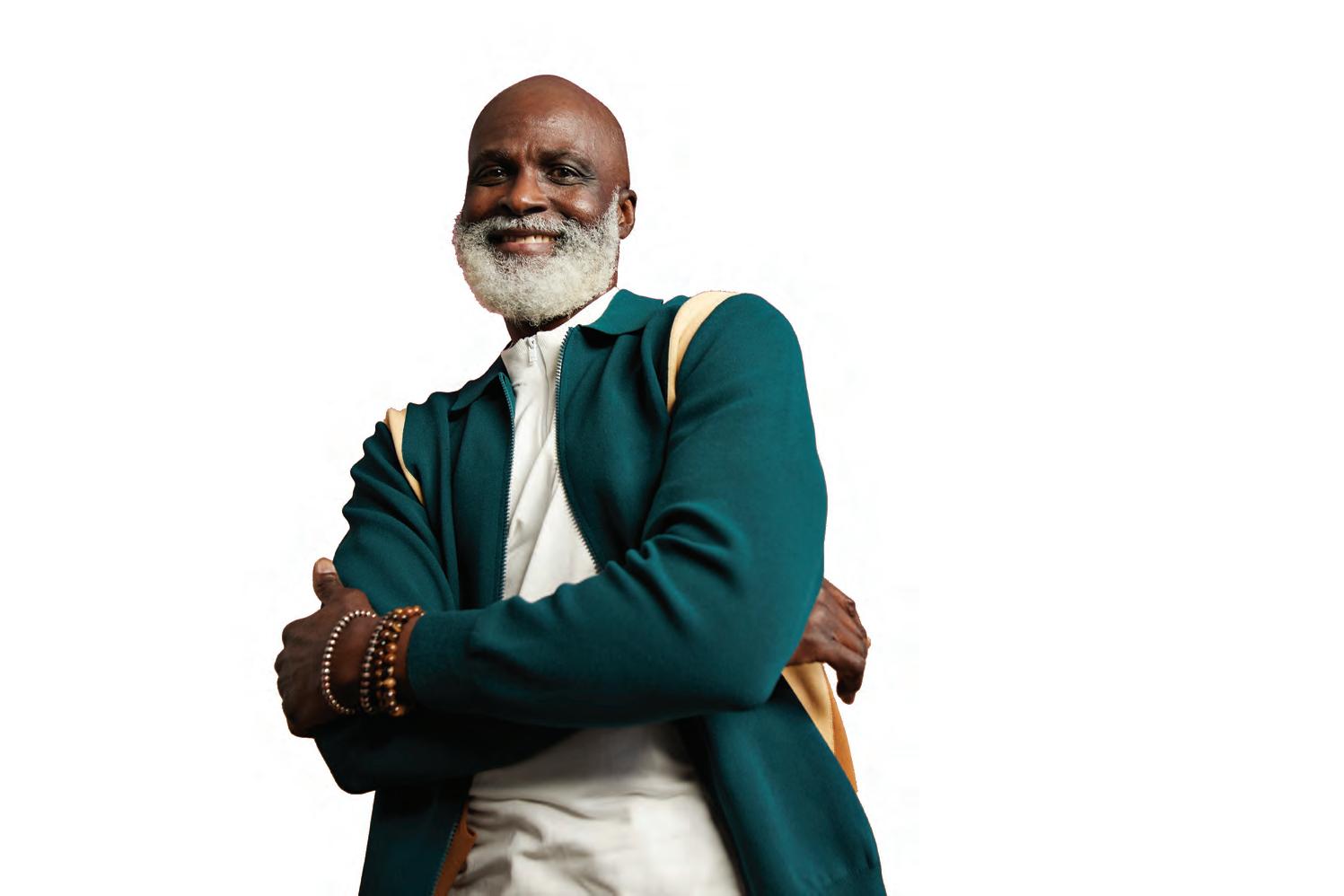



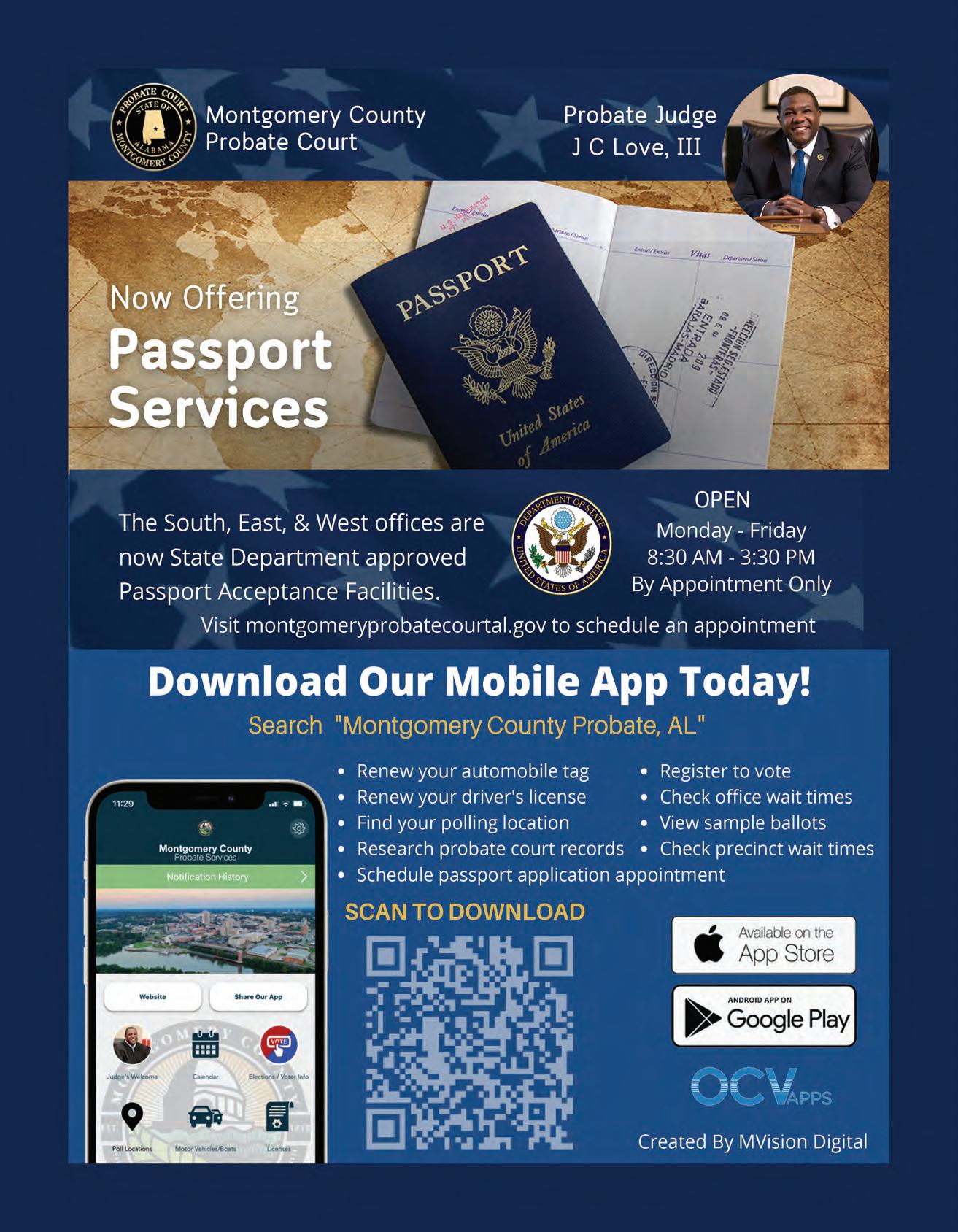










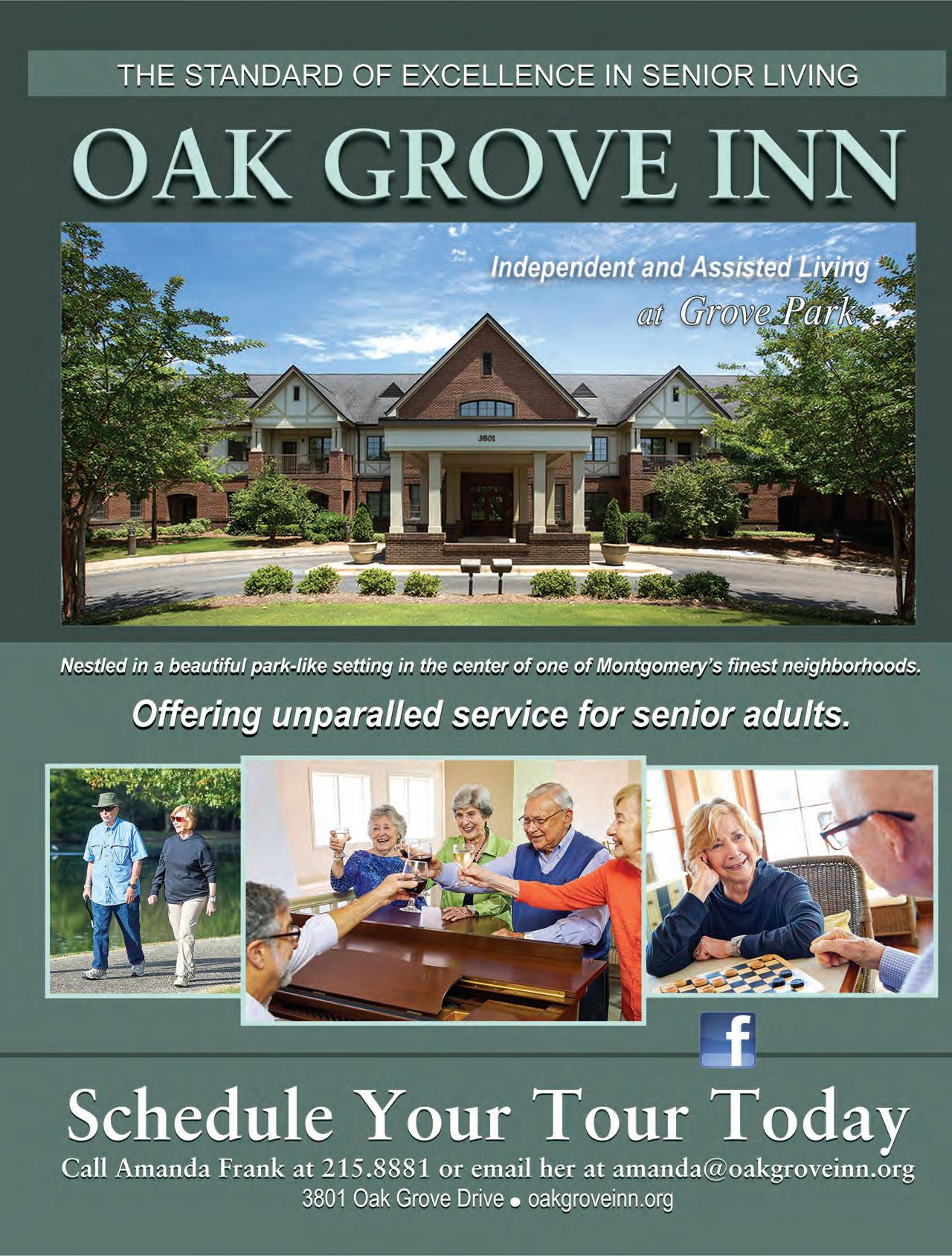


















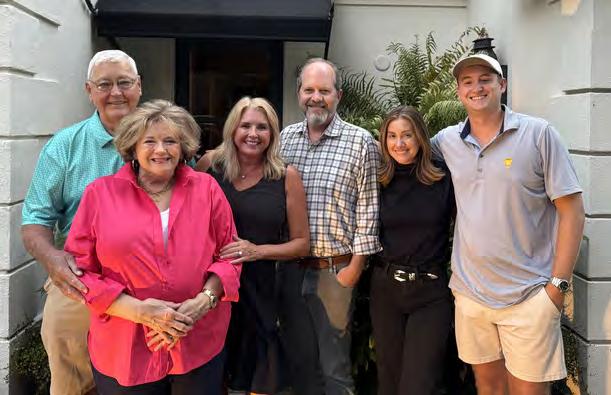






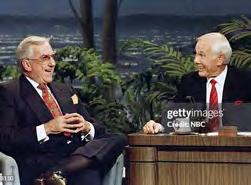


Dinner Recipe: One Pot Chili Mac
Grumpy But Grateful
Event: Songs From The Stage at MMFA
Event: Annual Riverwalk Wine Festival
Event: Junior League Holiday Market
Event: Parade of Pumpkins in Prattville
Event: Era of Yacht Rock at MPAC
Event: Joy to Life presents Ruben Studdard
Event: Annual Art in the Bottom Park
Caregiver of the Month
Word Search Contest
Moore Wealth Management
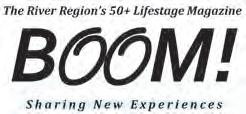
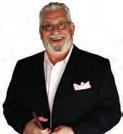
Founder Jim Watson (1950-2024)
Publisher Jason Watson 334.328.5189 cell/text jason@riverregionboom.com
Editor DeAnne Watson 334.462.0225 cell/text
Contributing Writers
Jeff Barganier
Greg Budell
Susan Moore
Rebecca Oates
Nick Thomas
Cover Photography
Photography by DiAnna Paulk photographybydiannapaulk.com
Advertising
Jason Watson, 334.328.5189 jason@riverregionboom.com



October always carries a quiet power. The light changes. The air shifts. And whether or not the weather fully cooperates, we feel something stirring—a call to reflect, reset, and maybe even rediscover.
That spirit is alive and well in this month’s issue of BOOM! At the center is our cover story on Martha Smith, a woman who radiates faith, strength, and compassion. After nearly three decades in community banking and nearly twenty more walking alongside women through breast cancer with Women of Hope, Martha now knows the journey firsthand. Her story reminds us that aging well isn’t about avoiding hardship—it’s about what we do with it. She shows us that even the hardest days can be transformed into testimony, and even in the face of diagnosis, faith and community can make it “the best day” after all.
October is also Breast Cancer Awareness Month, and this issue honors that in multiple ways. In addition to Women of Hope’s incredible support programs, we’re proud to recognize another powerhouse in our community: the Joy to Life Foundation, whose tireless work provides life-saving mammograms, education, and early detection services throughout Alabama. Be sure to check out the ad on page 38 for details about their upcoming benefit concert on October 25—a night of music, mission, and joy you won’t want to miss.
Elsewhere in the issue, you’ll find encouragement and insight for whatever season you’re in:
• A thoughtful look at how to understand and accept your adult child’s parenting style, even when it challenges the way you raised them.
• A nostalgic, sharply funny column from Greg Budell on the late, great Johnny Carson, reminding us that influence doesn’t have to be loud—it just has to be genuine.
• An adventure-filled fly-fishing story from Jeff Barganier, complete with waterfalls, bears, and a reminder that balance (literally) gets trickier with age—but the laughter is worth it.
• A practical and empowering feature on using YouTube for DIY projects—because aging well includes figuring things out, and that little red play button might be the most underrated tool in your toolkit.
• And for the women in our community: “Rediscovering Radiance” offers a real-talk guide to skincare, confidence, and redefining beauty on your own terms. Because taking care of yourself isn’t vanity—it’s vitality.
Taken together, these stories aren’t just about surviving another season. They’re about thriving in it. About learning new things, embracing new rhythms, and showing up—with strength, joy, and yes, a little lipstick.
So here’s to October: the month of pink ribbons, pumpkin everything, and the deep, quiet wisdom that comes with experience. Let’s keep learning. Keep giving. Keep walking alongside one another—and into whatever’s next.
And as always, Age Well—

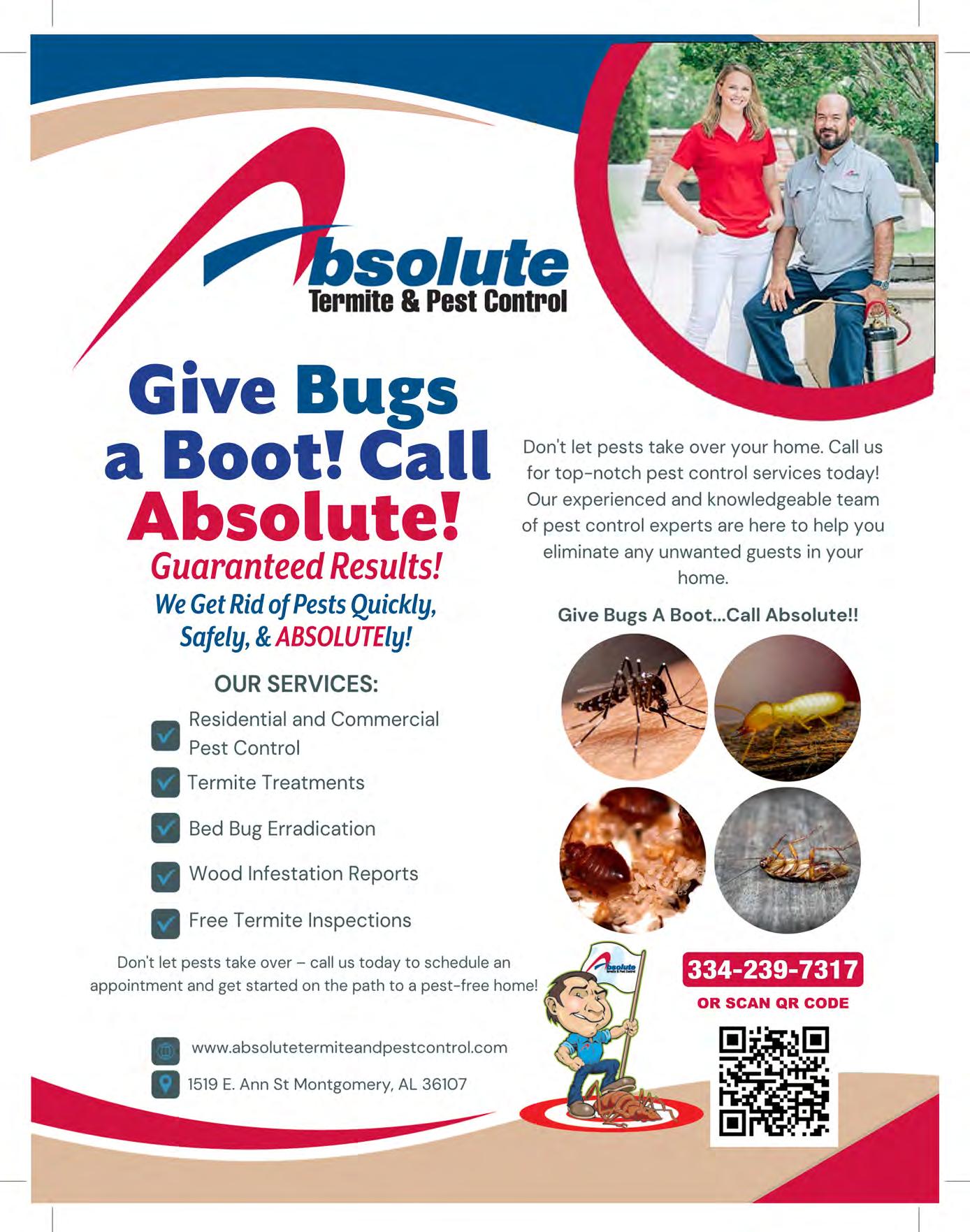


“Who are you planning for?” This was our question in “Planning for your future (Part 1) ” (April 2025 Boom Magazine). Part of that consideration is whether any of your beneficiaries are now or may be in the future receiving benefits from a needs-based public benefit such as Supplemental Security Income (SSI) or Medicaid. If so, a Supplemental Needs Trust may be an important tool to protect your beneficiary from losing and/ or not obtaining a public benefit.
Supplemental Needs Trusts are an estate planning tool that may be utilized by an individual who has a qualifying disability. Its purpose is to improve the individual’s quality of life without impacting any public benefits he/she may be receiving or may need in the future. In a needs-based public benefit program, an individual whose resources exceed a certain limit may be disqualified from receiving benefits. This is where a Supplemental Needs Trust may be helpful. A Supplemental Needs Trust allows individuals to have access to funds for items not covered by their needsbased public benefit. The key is that these trusts supplement, not replace, any benefit provided by the needs-based public benefit.
1) First-Party Supplemental/Special (“Special”) Needs Trust: This trust is established by the Beneficiary/ Grantor (“Beneficiary”). These terms are interchangeable for purposes of the First-Party Special Needs Trust (and/or by someone acting on the Beneficiary’s behalf) with the Beneficiary’s funds for the purpose of retaining or obtaining
eligibility for needs-based public benefits. Another name for this trust is a “Self-Settled” Special Needs Trust.
Age Restrictions of Beneficiary: The trust is irrevocable, and the Beneficiary MUST be younger than 65. The individual must have a disability.
Compliance: Trust, SSI, and Medicaid rules

Who Initiates: Beneficiary, parent, grandparent, court, or conservator/guardian, NOT a spouse
Source of Funds: Beneficiary’s own money (example: the individual received money from a lawsuit, inherited the money directly, or won a lottery). The funds either belong to the individual or are controlled by the individual. It must be created and funded before the Beneficary’s 65th birthday. (The trust may continue after the 65th birthday, but the beneficiary cannot make new contributions to the trust with the exception of interest, dividends, or other earnings from the trust’s existing assets.)
Restricted Distributions: Appropriate distributions are made to the Beneficiary during his/her life, then at the
individual’s death to Medicaid (“Medicaid payback provision”) up to the amount that Medicaid expended on the individual during his/her life (with some exceptions).
Beneficiary Control: The Beneficiary cannot be a Trustee and cannot have any control over the money.
Reporting Requirements: Social Security and Medicaid, and it must meet their criteria for eligibility of benefits and or continuation of benefits.
Medicaid Payback: YES. Additionally, if Medicaid were provided in more than one state, then the payback is prorated among the states that provided Medicaid.
Supplemental
Trust: This trust is established by someone other than the Beneficiary with disabilities with assets that never belonged to the Beneficiary. Typically, it is funded by parents, grandparents, other family members, or perhaps close friends. The Beneficiary cannot be a Trustee and cannot have any control over the money.
Source of Funds: The funds for this trust may be derived from various sources, such as an inheritance in the name of the trust , third-party personal savings, third-party gifts, etc.
Age Requirements of Beneficiary: None
Medicaid Payback: No; once the initial Beneficiary dies, the funds in the trust may be disbursed to other named Beneficiaries in the trust.
Reporting Requirements: Social Security and Medicaid when it is funded.
(These rules are subject to change.)
• Medical and dental expenses not covered elsewhere
• Equipment like wheelchairs or specially equipped vans
• A car
• Therapy or rehabilitation services
• Training and education
• Vacation
• Help with starting a business
• Home furnishings
• Travel, which can include the cost of a companion
• Transportation services (Uber, Lyft, bus pass, etc.)
• Recreation and entertainment
(summer camp, movies, social events, sports equipment)
• Electronic equipment, appliances, and computers
• Payments for a companion
• Legal or guardianship expenses
• Insurance
• Burial expenses
• Rent or mortgage payments
• Cash
• Gift cards
• Condo association fees
• Property taxes
• Utilities, such as electricity, sewer
• Garbage removal
• Heating fuel
A Third-Party Supplemental Needs Trust may be a standalone trust or one embedded in a will. There are pros and cons to this decision as well. Another challenge in Supplemental Needs Trusts is the trustees. You must select people whom you trust 100% and who either understand the laws surrounding the trust and/or will seek help. There are also supplemental pooled trusts that may be considered, which will be discussed briefly in “Planning for your Future” (Part 5).
Alabama State Bar requires the following: “No representation is made that the quality of the legal services to be performed is greater than the quality of legal services performed by other lawyers.”
Responsible Attorney: Anne Elizabeth McGowin.

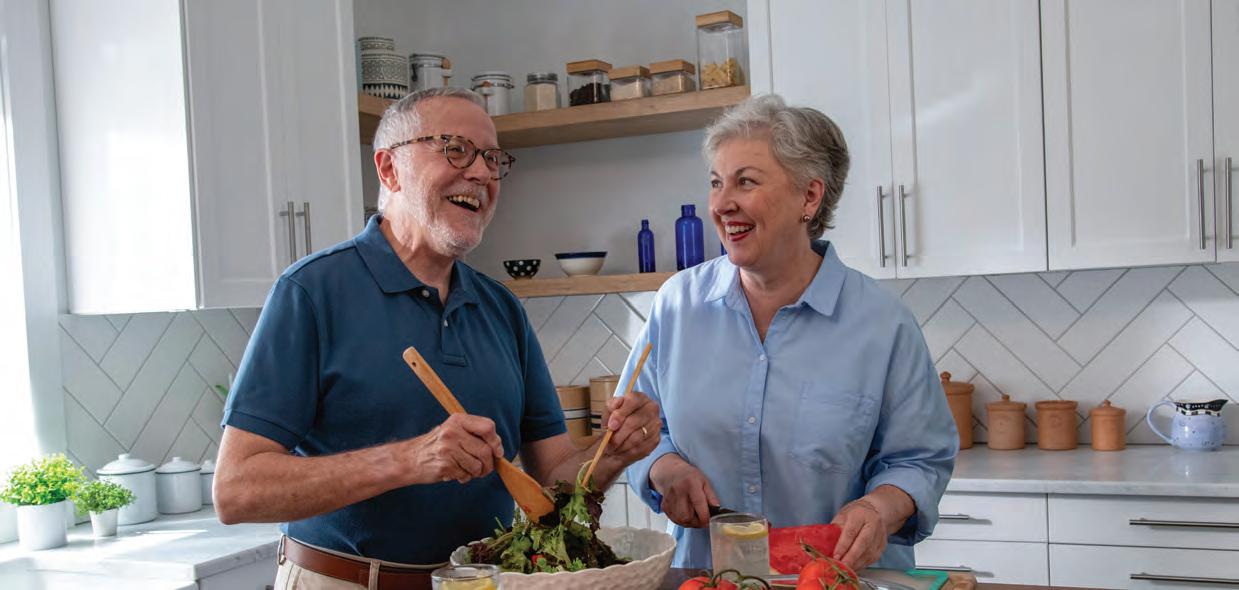
There’s good news for Alabamians living with limited income and resources. The Medicare Extra Help program—also known as LIS—expanded in 2025. If your income is below 150% of the federal poverty level, you may now qualify for full Extra Help benefits.
This means you could pay lower or no premiums, reduced Part D drug copays and reduced or no Part D deductible for your prescriptions. Many people don’t realize they’re eligible—so it’s worth checking.
For example, in 2025, individuals earning less than $23,475 per year (or couples earning less than $31,725 per year) may qualify as long as your assets are below the specified limits. You could save hundreds of dollars each year on the medications you rely on!
To see if you qualify for Extra Help, call: The Social Security Administration at 1-800-772-1213, between 8 a.m. and 7 p.m., Monday through Friday. TTY users should call 1-800-325-0778.
Medicare can be complex, and it’s normal to feel uncertain with so many parts and plans to consider. Blue Cross and Blue Shield of Alabama understands this and offers Medicare plans grounded in decades of experience and trust. For generations, Blue Cross has been a steady partner for individuals and families, providing coverage that gives you confidence and peace of mind as you navigate your healthcare choices. With a name you can depend on, you can feel secure making important decisions about your health.
Medicare is divided into four parts, each covering specific services:
Part A and Part B are provided through the U.S. government and are referred to as Original Medicare.
Part A Hospital Insurance: Covers inpatient hospital stays, care in a skilled nursing facility, hospice care and some home health care
Part B Medical Insurance: Covers certain doctors’ services, outpatient care, medical supplies and preventive services
Part C and Part D are offered through Medicare-approved private insurance carriers, like Blue Cross and Blue Shield of Alabama.
Part C Medicare Advantage: Includes all benefits and services covered under Original Medicare, and typically includes Medicare prescription drug coverage (Part D) as part of the plan
Part D Prescription Drug Plan: Adds prescription drug coverage to Original Medicare and some Medicare Cost Plans, Medicare Private-Fee-for-Service Plans and Medicare Medical Savings Account Plans
Medicare Supplement (Medigap) Plans are not part of Medicare but help cover gaps in Original Medicare, including hospital and medical deductibles, copays and coinsurance. They do not include prescription drug coverage.
INITIAL ENROLLMENT PERIOD (IEP)
ANNUAL ENROLLMENT PERIOD (AEP)
MEDICARE ADVANTAGE OPEN ENROLLMENT PERIOD (MAOEP)
3 MONTHS AFTER through through
3 MONTHS BEFORE October 15 December 7 January 1 March 31
This is the seven-month window surrounding your 65th birthday when you can first enroll in Original Medicare (Part A and/ or Part B) and additional coverage.
From October 15 through December 7, you can review and make changes to your Medicare coverage, including changing or enrolling in a Medicare Advantage plan or swapping from Medicare Advantage to a Medigap plan.
From January 1 through March 31, if you are enrolled in a Medicare Advantage plan, you can make a one-time election to switch to another Medicare Advantage plan or to Original Medicare. If you enroll in Original Medicare, you may also purchase a Medicare Supplement and/or a Prescription Drug Plan.
SPECIAL ENROLLMENT PERIOD (SEP)
After certain events
After certain events, such as a recent move outside of your plan’s service area or losing your employer or union coverage, you may be eligible for a Special Enrollment Period.

With almost 90 years of experience, Blue Cross and Blue Shield of Alabama offers trusted healthcare coverage. Our extensive network includes 90% of doctors and 100% of hospitals in Alabama,1 providing top-tier care statewide. We offer comprehensive plans that cover medical expenses, prescription drugs and include additional benefits like dental, vision and hearing.
Our commitment to quality is reflected in high customer satisfaction and ratings, with Blue Advantage plans earning 5 stars for “Member Experience with Health Plan” and 4 stars overall in 2025.2 Our emphasis on customer service ensures you’re never alone in navigating your healthcare options.
Choosing Blue Cross means peace of mind, with local resources and straightforward plans designed to make your Medicare journey simple and easy.
Recognizing that each individual has unique healthcare needs, Blue Cross provides a range of plan options to help you find the right fit.
If you want freedom of choice and many extras included, consider Blue Advantage® (PPO). It’s a Medicare Part C plan that provides both medical and prescription drug benefits, and it’s an excellent option if you want one easy-to-use plan with comprehensive coverage.
With Blue Advantage (PPO), you get:
• Choice of plans, including a $0 monthly premium option
• $0 Primary Care Physician (PCP) copay, depending on plan selection
• Prescription drug copays as low as $0, depending on plan selection
If you want to lower your out-of-pocket costs while keeping Original Medicare, consider C PlusSM. It’s a Medicare Select plan that helps cover the costs Original Medicare doesn’t — like deductibles, copays and coinsurance — so you pay less when you get care.
With C Plus, you get:
• No referrals needed to see specialists
• Use any doctor or hospital accepting Medicare, even out of state
• No underwriting restrictions or penalties, unlike many other carriers
If you want simple and easy stand-alone prescription drug coverage, consider BlueRxSM (PDP). It’s a Medicare-approved Part D plan from Blue Cross and Blue Shield of Alabama that helps cover the cost of your medications.
With BlueRx, you get:
• Drug copays as low as $0, depending on plan selection
• Coverage for Medicare-approved generic, brand-name and specialty drugs
• A large selection of network pharmacies in Alabama and over 55,000 pharmacies nationwide
Blue Advantage® is a PPO and BlueRxSM is a PDP with a Medicare contract. Enrollment in Blue Advantage (PPO) and BlueRx (PDP) depends on contract renewal. Blue Advantage (PPO) and BlueRx (PDP) are provided by Blue Cross and Blue Shield of Alabama, an independent licensee of the Blue Cross and Blue Shield Association. This is a solicitation of insurance. Contact may be made by an issuer or insurance producer. C PlusSM is a Medicare Select Plan and is a private insurance plan regulated by the Alabama Department of Insurance. It is not connected to or endorsed by the U.S. government or the federal Medicare program.
1 Doctors refers to Medicare participating providers. Source: BCBSALMedicare.com/whybcbsal
2 Every year, Medicare evaluates plans based on a 5 star rating system. Source: BCBSALMedicare.com/whybcbsal
3 For accommodations of persons with special needs at meetings, call 1-888-246-7023 (TTY 711).
4 We are available Monday – Friday, 8 a.m. – 8 p.m. CST. From October 1 to March 31, the hours of operation are Monday – Sunday, 8 a.m. – 8 p.m. CST. You may be required to leave a message for calls made after hours, weekends and holidays. Calls will be returned the next business day.
Choosing the right Medicare plan is an important decision, and it’s essential to think about several factors to make sure it meets your needs. Here are some things to consider as you make your choice:
Network Coverage: Is your doctor in the plan’s network? If they are not in network, how much will it cost to see them?
Medicare Advantage plans, like those offered by Blue Cross, combine the benefits of Original Medicare with additional coverage options. These plans often include prescription drug coverage, vision, hearing and dental care.
By choosing a Medicare Advantage plan, you can simplify your healthcare experience by having one comprehensive plan that covers a wide range of services.
Prescription Costs: What will your prescription costs be? Understanding the out-of-pocket expenses for your medications is essential in choosing the right plan.
Monthly Costs: What are your overall monthly expenses? Consider the premiums, copays and any other expenses that will be part of your budget.
Travel Coverage: Are you covered when you travel? For those who travel frequently, ensuring that your healthcare plan provides coverage outside your local area is important.
Medicare Advantage plans are designed to provide more coverage than Original Medicare alone. This holistic approach to healthcare provides access to a wide range of services that support both your medical needs and overall well-being.
Understanding the different parts of Medicare and their benefits can help you choose the right plan for your needs. Blue Cross offers support and guidance to help you navigate this important decision. With a variety of plan options and dedicated customer service, you can find affordable coverage that suits you.
For personalized advice, sign up for a meeting3 with a local advisor. Our advisors can assist you in exploring your choices and selecting a plan that fits your needs.
Let Blue work for you.
Extra Benefits: Are there extra benefits like dental, vision and hearing? The additional coverage can add significant value to your healthcare plan.
To choose the right plan, assess your current and future healthcare needs. Consider your medical conditions and potential health changes that may require more coverage. By carefully evaluating these factors, you can select a plan that offers the best combination of coverage and cost.
To get more information or talk to a local advisor, call 1-855-978-5239 (TTY 711) or visit BCBSALMedicare.com/Blue12, 8 a.m. – 8 p.m. CST.4
Photography provided by Jeff Barganier
If we’re shooting a movie, it’ll be a cross between Deliverance and Hawaii Five-O. A scene from Deliverance was allegedly filmed nearby, but skipping over the lake at forty miles per hour is more like a scene from Hawaii Five-0… minus the sunshine. Storm clouds are gathering, but we don’t care. It’s fish or cut bait, and we’re here to fish! Our guide, Seth, is taking us to his favorite spot up the Forney Creek tributary, a few miles away. When another boat passes in front of us, he throttles back and eases over the undulating backwash. He’s a considerate young man who respects old geezers.
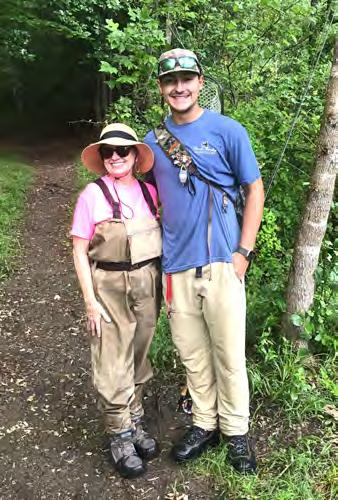
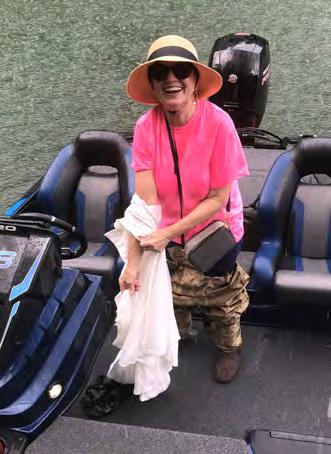
Mindful of our age, he decelerates for the big breakers, allowing us to remain
in the boat rather than be tossed like a couple of croutons into the liquid green salad of Lake Fontana. (We declined the life vests.) The surface relaxes, and we resume gliding speed, this time, into torrential rain. Seth and I are wearing appropriate glasses and headgear. But Cindy struggles to keep her widebrimmed straw hat from careening away. She’s holding it tightly over her face to shield against large raindrops pelting us like something out of the Book of Revelation. It’s probably not funny to her but Seth and I can’t help but roar with laughter. “It’s all part of the adventure,” I shout. At least there’s no lightning. Yet.
We arrive at the mouth of Forney Creek, and Seth swings into action. The last time we went fly-fishing was on the Rogue River in Oregon. The outfitter there gave Cindy men’s waders that pretty much swallowed her whole. But Seth has just the right size. Now soaking wet, she’s determined to pull them on for that much-desired Ralph Lauren look photo op. We gather our gear and hike along the creek a hundred yards or so. “Ever see any bear around here?” I ask. Seth says he sees them all the time. There have even been some “aggressive bear” encounters, he adds nonchalantly. He leads us through a thicket down to the creek. We watch and listen while he demonstrates how to catch fish in the Smokies. He gets Cindy started and takes me farther upstream. I admonish him several times to keep a close
eye on her as she’s of the more fragile sex and can easily get hurt. As soon as I utter these cautionary remarks, I step knee-deep into a hole among the rocks. I’m fighting to keep from tumbling into the rush of cold water. I think I’ve sprained my ankle. I glance downstream. Cindy’s upright and calmly casting away. Seth, who was highly recruited for college football as a kicker— he was 7th in the nation—is easing around as if on level ground. As for my balance, it’s not what it used to be. Seth is reaching his hand out to me, but, being the proud old geezer that I am, I’m embarrassed to take it. This attitude will soon change. Finally, I get my sea legs and start fishing. Seth goes back to check on Cindy. Within minutes, I’m catching the prettiest little speckled trout you’ve ever seen—four in all. But the spirited little critters escape the hook before I can reel them in! You’re going to just have to imagine me in a photo holding the fish and grinning at the camera. Maybe next time. The weather clears. Sunlight is splashing through these magnificent trees,
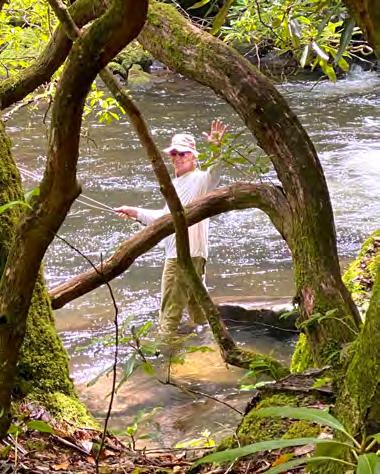
and the fast-flowing water sparkles. I sense a large (non-aggressive) bear laughing at me from behind a tree somewhere.
Without Seth, we would have never found this delightful spot. Seth’s part of a family fishing guide business that spans generations. It’s called Fly Fishing the Smokies, with one of two locations in Bryson City, North Carolina. See: Flyfishingthesmokies.net.
Back at the boat, I’m missing my prized Oakley prescription sunglasses purchased for occasions such as this. Not cheap! The bear is no doubt wearing them by now, I think. Seth and I backtrack and find them on the trail close to where we were fishing. We batten down the hatches and zip back across Lake Fontana. All Cindy and I have to do is walk up the hill to our car. Seth handles the rest. God bless Seth.
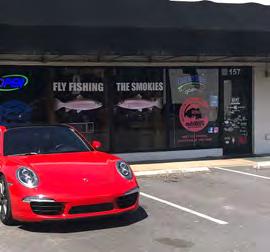
We’re lodging at a posh private residence on the Nantahala River. Guests can fly-fish right off the bank there. And you don’t have to throw them back! You can get a feel for the property on Instagram @ nantahalaluxuryescape. Because we’re exhausted and drying out fast, we opt not to go back to the house to change for dinner. Instead, we drive to Bryson City Brewing, located in the historic 1924 RC Cola Bottling plant, and take a secluded table outside in the open air. These guys serve wonderful local craft beer, and their hamburger is outstanding! The burger comes with large, yummy fries. This time, we split the burger. Next time, I’ll get my own.

there. I understand their pecan-encrusted trout is amazing. The Fryemont sits on a bluff overlooking Bryson City. Its architect was the same guy who designed Biltmore. The Inn has a fascinating history, and I’ll be writing about it for the next issue of BOOM! For more info about the Fryemont, visit: www.FryemontInn.com. Until next month, many blessings.






We’ll rest well tonight. Tomorrow, we plan to ride the Great Smoky Mountain Railroad through the Nantahala Gorge. It’ll pass right by our guesthouse. Afterward, we’ll do some research on the Historic Fryemont Inn (1923), and have dinner




Jeff Barganier is a novelist, travel writer and speaker. He travels far and wide upon the slightest excuse for something interesting to write about. His novels include Lawson’s Bluff (2021); The Slash Brokers (1998). He also manages Cindy Barganier Interiors LLC (www.cindybarganier.com) at The Waters in Pike Road, Alabama. Contact Jeff at Jeffbarganier@knology.net. You may print out his features at www.jeffbarganier.com and take them with you when you travel!


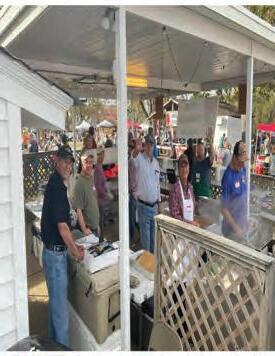








You’ve been there. The faucet starts dripping. The Wi-Fi is acting up again. Or your phone suddenly refuses to send pictures. Your first thought? Maybe call your son. Or text your neighbor. Or drive to the AT&T store and wait for someone to explain things.
But what if you didn’t have to do any of that? What if the solution was right at your fingertips, available anytime of day, without anyone sighing or rolling their eyes? That’s where YouTube comes in.
Yes, the same YouTube where your grandkids watch funny pet clips or where you catch old concerts also happens to be one of the most powerful DIY libraries on the planet. Millions of everyday folks and professionals post videos that walk you through almost any repair, fix, or project you can imagine. Think of it as the world’s largest instruction manual—except this one talks to you, shows you what to do, and waits patiently while you pause and rewind.
For most of us, reading a manual has always been more frustrating than helpful. “Insert tab A into slot B” doesn’t mean

much until you can actually see someone doing it. That’s why YouTube has become such a lifeline. It’s not about reading complicated instructions; it’s about watching someone roll up their sleeves and showing you exactly how it’s done.
Here’s what makes it different:
• Visual learning. You’re not just hearing instructions—you’re watching the process unfold step by step.
• Real-time pace. You can pause the video, rewind, or replay a tricky part as many times as you need.
• Variety of teachers. Some creators are professional contractors; others are regular people who once struggled with the same thing you’re struggling with now.
• Confidence building. Each time you fix something yourself, you realize you don’t always need to lean on your kids or neighbors.
If you’ve never used YouTube this way, you might be surprised by what’s available.
Around the house, you can learn how to unclog a sink, patch a hole in the wall, stop a toilet from running, or reset a tripped breaker.

Dad, How Do I? – A heartwarming channel started by a man teaching everyday tasks his father never got to show him. Perfect for simple, clear tutorials.
Fix It Home Improvement Channel – Short, practical guides for common home repairs.
TechGumbo – Easy explanations of technology tips and troubleshooting.
This Old House – A professional channel offering reliable, detailed home improvement guidance.
Senior Planet from AARP – Aimed specifically at older adults, offering digital know-how and lifestyle tips.
Technology fixes are another big one. You can find clear instructions for resetting your smartphone, connecting a printer, setting up Wi-Fi, or pairing Bluetooth headphones. Instead of sitting in the AT&T store for an hour, you can often solve the problem in minutes at home.
Cars and outdoor gear aren’t left out, either. Need to replace a car battery? Change windshield wipers? Sharpen mower blades or restring a weed eater? There’s a video for that.
And don’t forget hobbies and lifestyle. Want to try a new recipe, learn how to play guitar, or finally figure out how to fold a fitted sheet? YouTube has you covered. How to Find the Right Video Without Getting Overwhelmed
Of course, there’s so much content out there that it can feel overwhelming. Here’s how to navigate wisely:
• Be specific in your search. Instead of typing “phone won’t work,” type “iPhone 13 can’t send pictures” or “Samsung Galaxy won’t connect to Wi-Fi.”
• Look at video length. A three-minute video might be too rushed, while a 20-minute one may be overkill. The sweet spot is usually 7–12 minutes.
• Check the comments. Other viewers will often share if the solution worked—or if it didn’t.
• Pause and rewind. Don’t try to keep up in real time. Do it at your pace.
• Safety first. If a project involves gas lines, electrical wiring, or something that could put you in harm’s way, YouTube is great for education, but sometimes it’s best to call a pro.
Here’s the thing: it’s not just about saving money or avoiding a trip to the store. It’s about the confidence that comes when you solve a problem on your own. The first time you successfully follow a YouTube video to stop that dripping faucet or reset your Wi-Fi router, you realize—“I can do this.”
That small win snowballs. You begin reaching for YouTube before reaching for your phone to call someone else. And little by little, you feel less dependent and more capable.
Many older adults tell me it’s not the repair itself that matters most; it’s the feeling that they’re not falling behind in a fast-moving world. YouTube becomes not just a tool, but a lifeline for independence.
Don’t box YouTube into just “fix-it” projects. It’s also an incredible place to learn new skills and explore interests.
Cooking: From simple dinners to bread baking, you can watch chefs and home cooks demonstrate step by step.
Fitness: Gentle yoga, balance exercises, and stretching routines designed for older adults are abundant.
Hobbies: Painting, gardening, playing instruments, or even learning photography are all popular video topics.
This isn’t just about maintaining your home—it’s about keeping your mind and skills fresh.
Maybe the best part of using YouTube this way isn’t even the fix itself. It’s what it represents. Every time you master a new repair or solve a tech problem on your own, you’re reclaiming a little piece of independence.
No waiting for the kids to have time. No sitting in the store while someone half your age explains something quickly and impatiently. No awkward “Can you come look at this?” calls to neighbors. Just you, your phone or computer, and a video that walks you through the steps.
And here’s the secret: the more you do, the easier it gets. The search terms come faster. The steps feel familiar. The fear of “messing up” shrinks. What grows instead is confidence, capability, and even pride. •
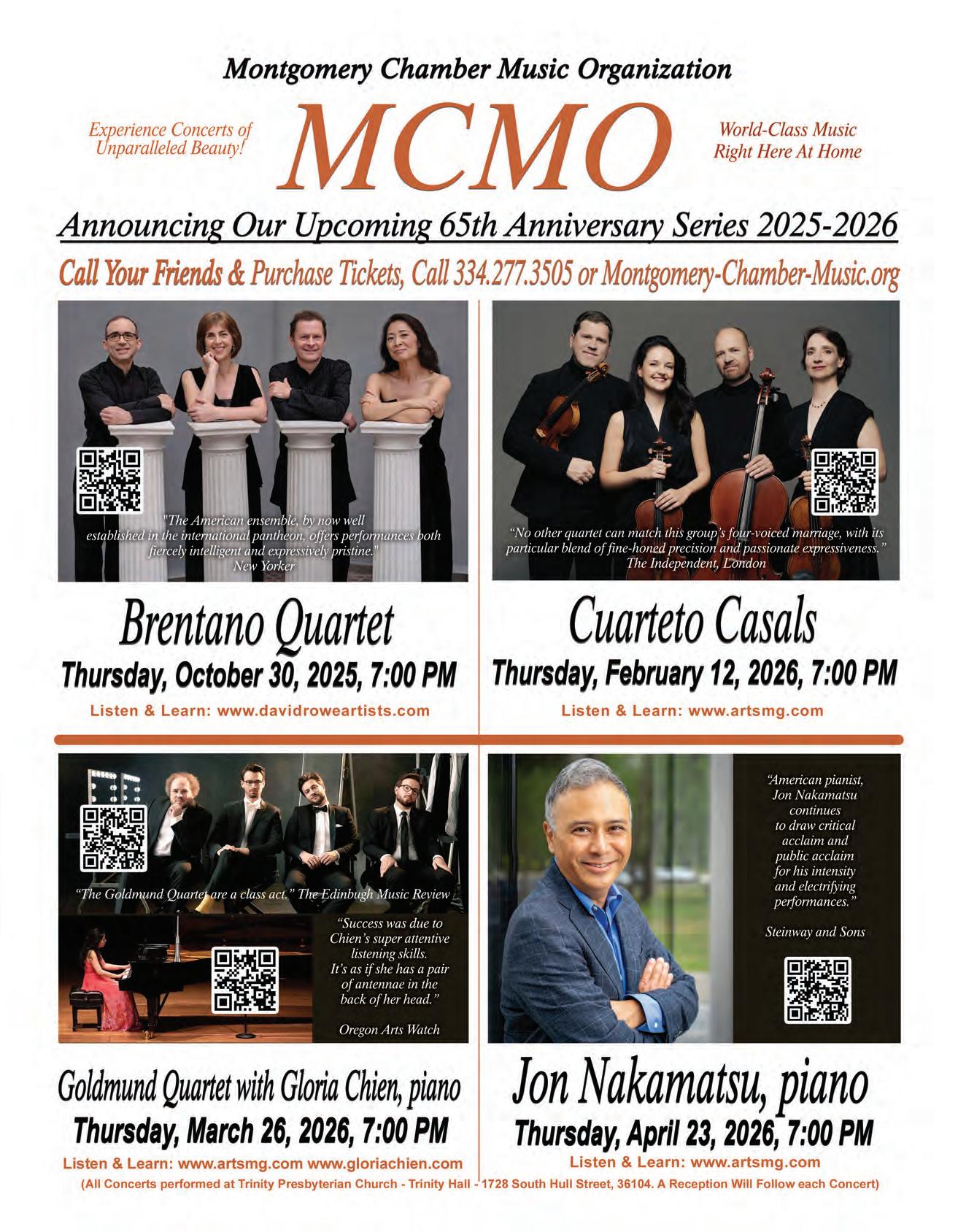


With the recent completion of the stone columns for the new Pedestrian Entrance to Montgomery Botanical Gardens, the board of directors is excited that more good things are in store. The arched MBG sign will soon be installed over the columns that will designate the location of the gardens for visitors. Then the Pedestrian Gate will be installed between the columns.
Montgomery Botanical Gardens, River Region Trails and the city will be working together to complete the improvements in accessibility and safety for the new entrance. Plans are to improve the surfaces of the sidewalks and curbs at the intersection of Park Avenue and Forest Avenue and to adjust
the curbing to be ADA-compliant. The uneven area and sidewalk at the new entrance will be removed and replaced with a smooth surface to improve accessibility to the gardens. New grass sod will be installed in the rectangular area beside the street, and historical hexagonal stones will be installed in concrete, smoothly leading the way through the entrance. Both of these projects will enhance the accessibility, safety, and appearance of the entrance. The board of directors for MBG will be very pleased to have the new entrance and especially to have the sign in place so people will know the location of the gardens and have a convenient way to enter and enjoy them. An official ribboncutting will be announced when all the work is completed.
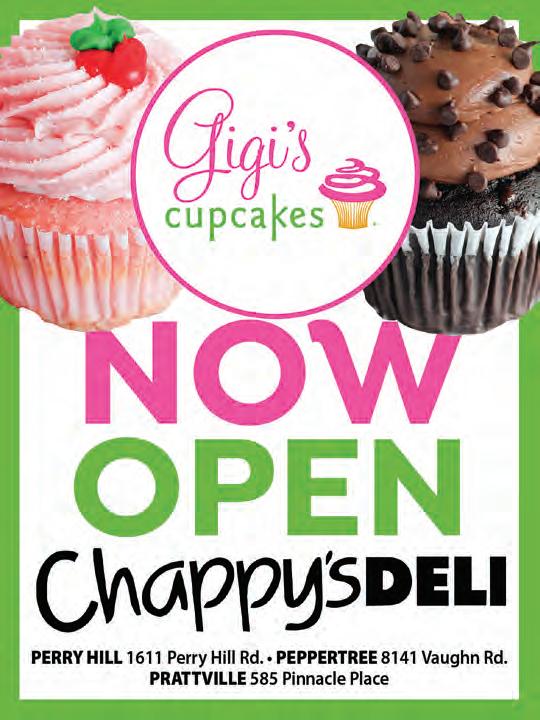
Some other near future plans for MBG include coordinating with the city to establish electric power in the gardens; raising funds to construct the gazebo designed for the Southern Garden; installing the second portion of the Japanese Maple Garden; planting of additional Memorial Trees; installing the historical JanneyCrane Fountain and new basin; holding an Art Contest that will enhance the appearance of the trash receptacles for the gardens; and participating in the national pollinator census count day. Another good thing is that the first of the 2025 Fall classes will be held on Saturday, September 13, at 10 am on “Passalongs and Propagation”. So, plan to join us and learn how to multiply your plants. Visit the MBG website at www. montgomerybotanicalgardens.com.

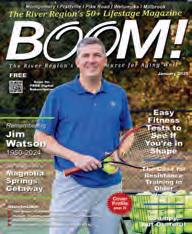
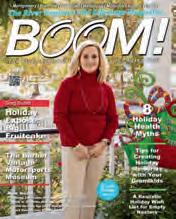
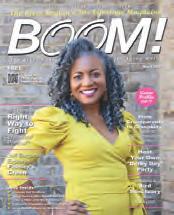

Ingredients:
1 tablespoon olive oil
8 ounces ground beef
1 onion, diced
3 cloves garlic, minced
4 cups chicken broth
1 (14.5-ounce) can diced tomatoes
¾ cup canned white kidney beans, drained and rinsed
¾ cup canned kidney beans, drained and rinsed
2 teaspoons chili powder
1 ½ teaspoon cumin
Kosher salt and ground black pepper, to taste
10 ounces elbow macaroni
¾ cup shredded cheddar cheese
2 tablespoons chopped fresh parsley leaves
Instructions: Heat olive oil in a large stockpot or Dutch oven over medium high heat. Add ground beef and onion, and cook until browned, about 3-5 minutes, making sure to crumble the beef as it cooks; drain excess fat. Stir in garlic until fragrant, about 1 minute. Stir in chicken broth, tomatoes, beans, chili powder and cumin; season with salt and pepper, to taste. Stir in pasta. Bring to a boil; cover, reduce heat and simmer until pasta is cooked through, about 13-15 minutes. Remove from heat. Top with cheese and cover until melted, about 2 minutes. Serve immediately, garnished with parsley.
https://damndelicious.net/2014/03/15/one-pot-chili-mac-cheese/




You catch your reflection in a window, or under the bright bathroom light, and pause. “When did those lines get here?” you ask yourself. Or maybe you’ve noticed that your skin doesn’t bounce back as quickly as it used to, or that makeup doesn’t sit the same way on your face. These little reminders can stir something deeper: the awareness that time is moving, and your skin is keeping track.
For many women, there comes a moment when caring for skin takes on a new urgency. Maybe you’ve always had a routine, or maybe you’ve coasted through with soap and water and the occasional moisturizer. Either way, the desire now is usually the same: how do I care for my skin in a way that helps me age gracefully—keeping it healthy, vibrant, and confident?
The good news? It’s not too late to start, and you don’t need an overwhelming 12-step regimen to see real changes. What matters most is consistency, the right ingredients, and a mindset shift. Let’s walk through it together.
In your teens, skin care might have been about acne control. In your 30s, it may have shifted toward prevention. But now? Now it’s about renewal and protection. Your skin is thinner, drier, and slower to repair itself. Collagen—the protein that keeps skin firm—declines steadily, and hormones play a role in skin thinning and elasticity. None of this is “bad”; it’s simply the natural progression of a life well-lived. The trick is learning how to support your skin as it moves into this new season.
So instead of thinking of anti-aging as “fighting” time, think of it as partnering with your body. You’re nourishing what’s still vibrant, giving a boost to what’s slowing down, and making small daily choices that add up to lasting results.
Every great skin regimen begins with the basics. And while these sound simple, they’re often the first things we overlook. Gentle cleansing is key. Harsh foaming cleansers or strong bar soaps
can strip your skin of what little natural oils it’s producing. Opt for a creamy or milky cleanser that removes impurities but leaves your skin soft. Hydration is non-negotiable. Look for moisturizers that contain hyaluronic acid (a molecule that pulls water into the skin), ceramides (which repair your skin’s barrier), or glycerin (a tried-and-true hydrator). A richer cream at night can be soothing, while something lighter in the morning pairs better with sunscreen. And speaking of sunscreen—yes, it still matters, maybe more than ever. Many women say, “The damage is already done.” But that’s not true.
Sunscreen not only prevents new damage; it allows your skin to heal and protects against age spots, sagging, and skin cancer. A broad-spectrum SPF 30 or higher should be your daily friend, even on cloudy days.
When it comes to anti-aging, certain ingredients rise above the rest. If you

feel lost in the sea of serums and creams, here are the ones truly worth your attention:
Retinoids (Retinol, Retinal, Tretinoin): These vitamin A derivatives are the gold standard for stimulating collagen, smoothing fine lines, and improving texture. Start slowly (2–3 nights a week) to avoid irritation, and pair with a good moisturizer.
Vitamin C: This antioxidant brightens skin, evens tone, and helps protect against daily environmental stressors. A serum in the morning under sunscreen can give your skin a healthy glow.
Peptides: These amino acid chains signal your skin to build more collagen. They’re gentler than retinoids and can be layered underneath your moisturizer.
Niacinamide: This form of vitamin B3 strengthens your skin barrier, reduces redness, and helps with discoloration. It plays well with most other ingredients.
Exfoliants (AHAs like glycolic or lactic acid): As we age, our skin’s natural shedding process slows. A gentle chemical exfoliant a couple of times per week can smooth dullness and help other products absorb better.
How many times have you carefully applied cream to your face, only to stop at the jawline? Your neck and hands often give away your age faster than your face because they’re thinner and get just as much sun. Extend your regimen down your neck and across your décolletage. Rub leftover serum into your hands. These areas deserve as much care as your cheeks and forehead.
You can spend a fortune on products, but what happens inside your body shows on the outside. This isn’t about perfection or impossible standards; it’s about simple habits that make your skin—and your whole self—thrive.
Hydration: Drink more water than you think you need. Skin cells plump up when well-hydrated.
Nutrition: Omega-3 fatty acids (salmon, walnuts, flaxseeds) support skin elasticity. Antioxidant-rich foods (berries,
leafy greens, colorful vegetables) fight oxidative stress.
Sleep: Sleep is when your body repairs itself. Aim for 7–8 hours.
Movement: Exercise increases circulation, delivering nutrients and oxygen to your skin.
Stress management: Chronic stress elevates cortisol, which breaks down collagen. Simple practices—walking, journaling, prayer, meditation—can calm your body and benefit your skin.
Boosts: When to Call in the Experts
At some point, creams and serums can only do so much. That’s where dermatologists and estheticians come in. Professional treatments don’t have to mean going “all in” with invasive procedures; there’s a wide spectrum.
* Facials and peels can give you an instant refresh, helping with dullness and clogged pores.
* Microneedling stimulates collagen by creating tiny controlled injuries that trigger healing.


* Laser treatments target age spots, redness, or uneven tone.
* Fillers or Botox are optional but increasingly common for softening deeper lines or restoring volume.
Think of professional treatments as “power tools”—they can accelerate results, but they work best when paired with your consistent daily care.
There’s something important to pause on here. It’s easy to see antiaging as a battle you’re destined to lose. But what if you shifted the story? Instead of fighting time, you’re learning to age beautifully. Instead of dreading the changes, you’re celebrating the life you’ve lived and taking steps to honor your body.
Lines around your eyes? They’re from years of laughter. Slight sagging at the jaw? That’s the result of decades of expression and resilience. You’re not erasing these signs—you’re softening them, supporting your skin so that you feel confident, radiant, and yourself.
And truthfully, confidence is the most powerful anti-aging tool of all. When you walk into a room with a spark in your eyes and warmth in your smile, no one is counting your wrinkles. They’re drawn to your presence.
If the idea of a full regimen feels overwhelming, start simple:
* Cleanser (gentle, hydrating)
* Moisturizer (morning and night)
* Sunscreen (daily, no exceptions)
After a few weeks, add one “power player”—maybe a vitamin C serum in the morning or a retinol cream at night. Once your skin adjusts, you can layer in more. Think of it as building a wardrobe: you don’t buy every piece at once, but over time, you create something that works beautifully for you.
Aging well isn’t only about skin. It’s about energy, vitality, joy, and connection. Your face is one chapter in the story—but your story is bigger. The women who feel the most youthful aren’t those with the smoothest skin; they’re the ones who keep learning, laughing, and living fully.
So yes, buy the serum. Try the retinol. Book the facial if it excites you. But also: take the trip, dance barefoot in your kitchen, wear the bright lipstick, laugh until your cheeks ache. That’s where your true glow comes from.
Aging is not something to fear—it’s a privilege denied to many. Your skin, with all its changes, tells the story of your life. By caring for it with intention, you’re not chasing youth; you’re embracing vitality. You’re giving yourself permission to show up in the world with confidence, not in spite of your age, but because of it. •
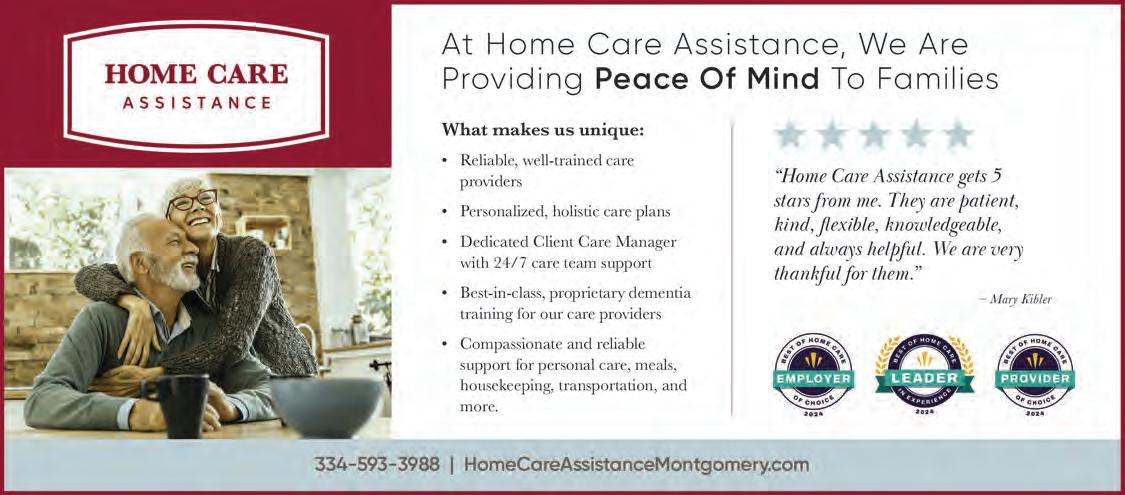
It was the original “must-see” TV. The Tonight Show with Johnny Carson.
Two decades after his death, Carson’s name remains in the news. For 30 years, he was the gold standard in late-night TV. For 30 years, he drew tens of millions of Americans (when the country was half its current population) to the boob tube (as we fondly called it) for Johnny’s take on America. His humor was goodnatured, no matter who he riffed on. Sometimes, the best moments on the show were the pregnant pauses where Carson could say a million words with the expression on his face. A joke could fall flat, and he’d still get laughs by promising the audience a visit from “the bird of paradise” or some other mythical creature.
Johnny’s opening monologue was essential show prep for morning radio hosts like me. Before the internet, Carson’s monologue told America what was important, interesting, or fodder for the next day’s coffee klatsch at the office.
Johnny Carson was the original influencer.
Others inheriting the late-night chat slots learned from the Master and followed his example. While no one was Johnny, Jay Leno kept it glib but friendly. David Letterman was funny and broke great comics like Norm Macdonald. Conan O’Brian was successful to a lesser degree. Perhaps none of the late-night hosts was better than John Stewart when his facial expression could crack up a crowd in a manner reminiscent of Carson.
Then somehow, the midnight chair descended to the likes of Stephen
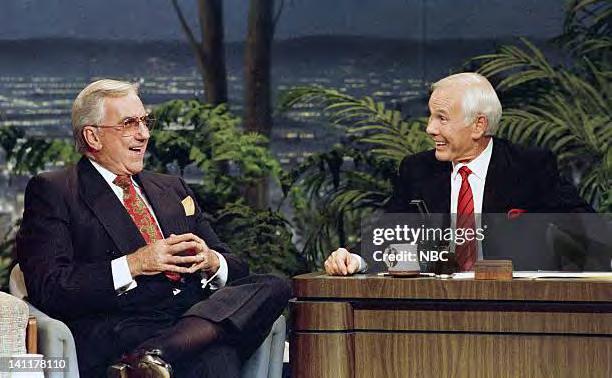
Colbert (fired) and Jimmy Kimmel. Jimmy Fallon navigated Johnny’s Tonight Show to horrendous ratings, managing to draw less than one million viewers to an evening of lame jokes and kissing celebrity keisters.
What happened?
Johnny Carson had politicians of note (and notoriety) on his show regularly, but to this day, I couldn’t tell you who the man voted for. Whether it be a movie star or a Governor, Johnny was The Star. He was bigger than any guest, who were grateful to have an audience with him. Johnny would prompt them to reveal a side of themselves America was not likely to see through the prism of news. Johnny Carson was there to entertain us. Every one of us.
Kimmel and Colbert’s demise came not from politics or politicians. It can solely be attributed to their insistence that we tune in for a nightly lecture on what they thought we should believe. They told us who they approved of at the
ballot box. They turned their studios into echo chambers for one-sided brainwashing sessions. Kimmel lost 72% of his audience (since 2015) but didn’t seem to care. The left wing was the only welcome opinion.
Early in President Trump’s first term, Jimmy Fallon made the “mistake” of asking DJT if his hair was real. That was the kind of moment Carson would soundly approve. No politics. Fun. Yet Fallon faced a maelstrom of shrieking leftist objection, condemning him for being nice to a man who somehow gets more votes every election. Fallon said, at the time, “I don’t know if I want to blow off 50% of my potential audience by taking sides." Sadly, Fallon fell in. He’s no better than Kimmel or Colbert. He just smiles better than the other two.
Back in the 80s, in a 60 Minutes interview with the acerbic Mike Wallace, Johnny prophetically warned his successors. Wallace wanted to know why Johnny refused to take a stand on “important issues”.
Without hesitation, Carson said, “Tell me the last time Red Skelton, Jack Benny (Johnny’s fave), or any comedian used his show for serious issues. THAT’S NOT WHAT I’M THERE FOR! Can’t they understand that?”
Wallace retreated. Why? Because Carson was spot on, and it needs to be said- a BIGGER star than Mike Wallace ever dreamed of being.
The deluge of one-sided, late-night opinions has been bad enough. Colbert’s harping cost him his job as CBS got tired of losing $40 million a year! Like it or not, his opinions were not very popular. Kimmel? He was not fired for free speech. He was taken off for telling the biggest lie in late-night history. He said conservative activist Charlie Kirk was taken out by “one of his own from the MAGA crowd." In fact, Charlie was assassinated by someone more aligned with Kimmel/Colbert. MAGA isn’t a political party. It’s a slogan on a hat. Kimmel works for ABC/Disney, which operates the network at the consent of WE, the governed. They hold a publicly entrusted license regulated by the Federal Communications Commission. The FCC largely leaves operators alone and lets the market decide what’s good and what isn’t. Telling an outrageous falsehood drew the Commission’s attention- as it should have. The FCC can pull that license if it determines the public’s interests have not been served or the public trust has been violated. If they take that piece of paper, the public permission to broadcast, you have empty studios and dead cameras because you’ve lost permission to use them. We, the governed, deserve better.
Rest in peace, Charlie. Give our love to Johnny.
Greg Budell has lived in Montgomery for 20 years. A 50+ year veteran of radio, TV and writing, Greg hosts the Newstalk 93.1FM Morning Show with Rich Thomas, Susan Woody, and Jay Scott, 6-9 AM Monday - Friday. He returns weekday afternoons from 3-6 PM for Happy Hour with Pamela Dubuque and a variety of sidekicks. His favorite topic is life! Greg can be reached at gregbudell@aol.com.
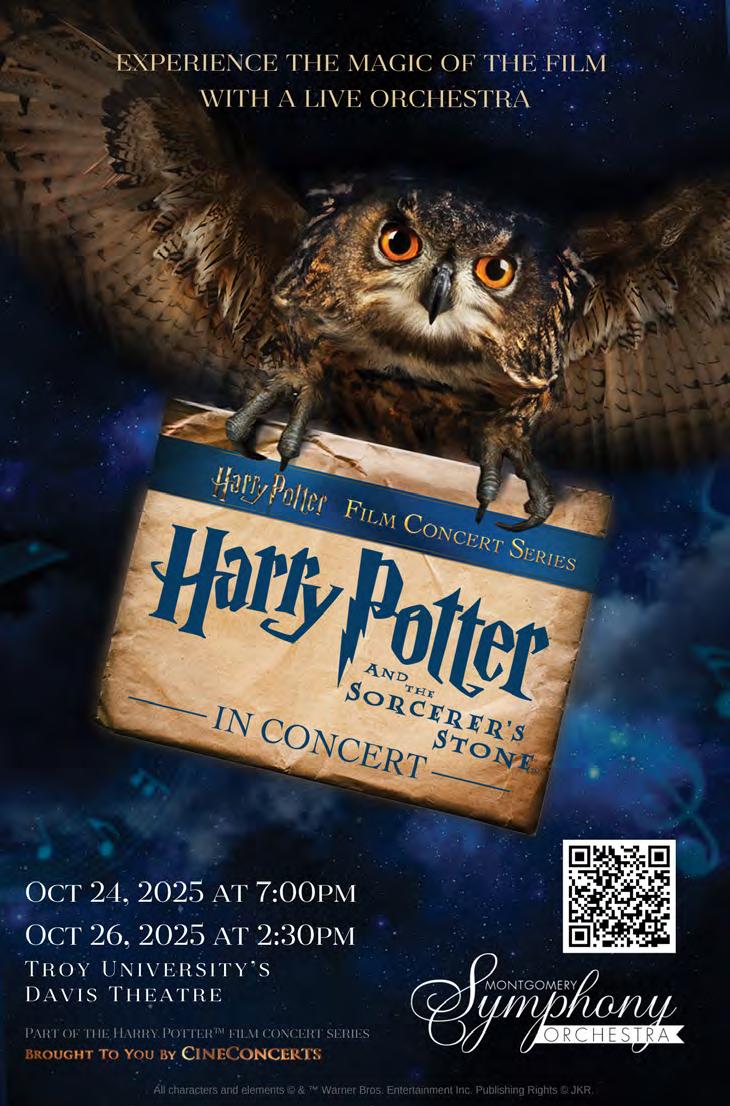




There's a group of women sitting at the table next to me, eating and laughing and chatting up a storm, and I can't help eavesdropping because that's what I do. They're talking about the ways they see their precious, much-loved grandkids being parented. ("When did parent become a verb?" one woman asks).
The women's dismay about some of the child rearing practices they are seeing is evident, although they all admit that parenting today is a difficult undertaking and that their adult children are doing the best they can to raise happy and healthy kids under very stressful circumstances.
This is borne out by the 2023 report, "Parents Under Pressure – The U.S. Surgeon General's Advisory on the Mental Health and Well-Being of Parents," which pointed out that 48% of parents say that most days their stress level is completely overwhelming. The report catalogues a multitude of stressors including financial strains, time demands, parental isolation and loneliness, and concerns about youngsters' health and safety, as well as the impact of technology.
While worries and parenthood were always synonymous, parents today are consumed with so many issues, from what is the best way to prepare their six-year-old for a lockdown at school to when they should allow their children to use a cellphone or other devices without parental controls.
Nonetheless, says one woman, "I just don't understand some of the decisions my daughter makes," and several voices chime

in to agree. Whether their grandkids are going through "the terrible twos" or are school-age and sassy, some of the parentchild interactions they see taking place make them cringe with surprise, frustration or annoyance.
"A lot of parents today very rarely say no to their children, because they hate seeing their kids unhappy," says a stylishlooking woman with purple streaks in her ash-blond hair. "I'm scared that they're all going to grow up to be self-centered people who think the world revolves around them. "
In many ways, parenting is a whole different experience than it used to be. Most of our parents slept with "Dr. Spock's Baby and Child Care" under their pillows looking to it for guidance on everything from weaning to toilet training to discipline.
Today, there are tons of parenting books, websites and selfproclaimed parenting experts and influencers. Inundated with advice, parents get confused about which "expert" to follow. There are also cultural, religious, geographic, socioeconomic and familial factors that influence parenting styles.
A survey of 1000 millennial parents across the country by Ann and Robert H. Lurie Children's Hospital of Chicago found that many are taking a different parenting path than their parents did, juggling work and family obligations, seeking advice from the internet and having conversations about mental health. 73% of parents surveyed believe their parenting style is better than past generations, with 3 in 4 practicing gentle parenting.
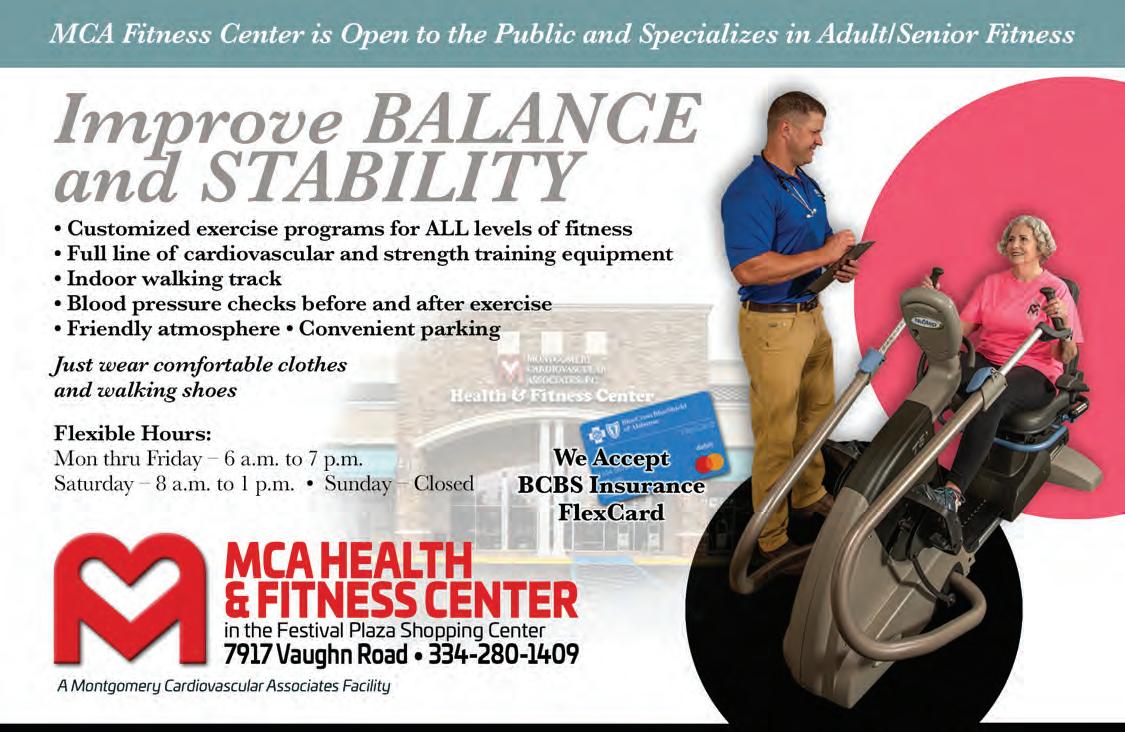
According to the Mott Poll, done by Michigan Medicine at the University of Michigan, nearly half of the 2,016 parents surveyed described disagreements with one or more grandparents about their parenting, with 40% saying that grandparents are too soft on the child and 14% saying that Grandma and/or Grandpa are too tough.
One of the women at the table says, "We would never have slept on the floor in our children's bedroom because 'it's the only way they'll go to sleep.' Most of us would not have let a toddler have a tablet every time they were in the stroller, although I certainly used television as a babysitter way more than I should have."
Once we understand a bit more about the parenting philosophies that are in vogue today, it may help us to become more tolerant and accepting, even if we don't agree with the theories behind them.
There are three well-known and still prevalent classifications of parenting styles based on the 1960s work of psychologist Diana Baumrind.
Authoritarian: When your kids were little and wanted a rationale for why you wanted them to do something, did you ever say, "Because I said so," or "Because I'm the mother, that's why?" Authoritarian parents expect to be obeyed, and children are rarely given a say in their own lives.
Authoritative: Generally considered to be the best parenting style, and often described as firm but nurturing, it provides a balance between structure and independence, providing boundaries but giving room for the child to make some of their own decisions and deal with the consequences.
Permissive (indulgent): Places a strong emphasis on addressing children's emotional needs, letting kids do what they want and not providing much in the way of rules or structure.
Under these umbrellas, there are a number of other styles, which include:
Gentle parenting: Interactions between parents and their youngsters are characterized by empathy and respect. It emphasizes guiding rather than controlling and using discipline strategies that are non-shaming.
Attachment parenting: Parents stay emotionally and physically close and attuned to their children, particularly when they are very young, and is characterized by extended periods of breastfeeding and co-sleeping.
Helicopter parenting: Hovering over children, closely monitoring their activities and experiences. Highly involved in their children's lives, often to the point of over-involvement.
Tiger parenting: High expectations of academic excellence and successful extracurricular achievement such as playing
an instrument. Tough love and strict disciplinary actions are typical.
Free-range parenting: Encourages kids to make their own decisions and explore the world around them. The belief is that this approach leads to increased resilience, confidence and problem-solving skills.
Daniela Gonzalez, a 33-year-old literary manager in Los Angeles, is the mom of a toddler. "I have certain rules such as no toys in the highchair, even if my daughter is fussing. My mother, who is my daughter's caregiver when I am working, does some things differently than we would do, and tells me, 'I raised four healthy kids, so I know what I'm doing.' And Grannies are supposed to spoil their grandkids."
Gonzalez says, "The majority of my friends are embracing the helicopter or gentle parenting style. Some of them differ from their own mom or dad as to how they want to parent, with many being generational differences."
"I think most of us try to incorporate the best aspects of many styles and use different ones in different circumstances or when our children are at particular developmental stages," she explains.
Donna Germain, LCSW, a Reflective Parenting Coach and psychotherapist in New York City, finds "it is not uncommon for parents to use technology to subdue their dysregulated child – even in a preemptive way – because the idea of helping a baby or child manage its emotions is too much for many already stressed parents. Kids are looking at screens during meals, using the potty, in their strollers, at the doctor." Because so many parents today are exhausted and stressed, this is understandable, although not necessarily the best way to manage things.
Germain adds, "One consequence of using technology to essentially anesthetize children is that they miss out on the opportunity to learn to manage emotions and develop the selftalk necessary for coping with life's many curveballs."
Charles Sweet, an Austin, Texas-based psychiatrist and Medical Advisor at Linear Health, says "Many of the various parenting styles have pros and cons. For example, in the gentle parenting style, the entire family benefits from the focus on greater empathy. The attachment style of parenting builds deep, strong security in the parent/child relationship but can be physically and emotionally demanding on the parents. There is no one correct parenting technique, but rather the right mixture for each individual family."
No matter what your thoughts or feelings, it is important to acknowledge and validate the many ways in which most of our beloved "children" are themselves striving to be loving, caring and effective parents.
Courtesy of nextavenue.org.


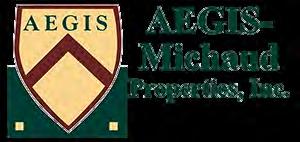



Halloween used to be simple. Throw on a sheet, cut out two eyeholes, and you were a ghost. Done. These days? Every kid looks like they just stepped off a movie set with costumes that cost more than my first car. I’m out here duct-taping wings onto a grandkid’s back because apparently “Dollar General fairy” doesn’t cut it.
And candy? Don’t get me started. I buy three mega-bags every year, thinking I’m prepared. By 7:15 p.m., I’m out. Gone. Poof. Now I’m handing out Werther’s Originals and a couple of quarters I found in the couch cushions. Meanwhile, my grandkids roll in with pillowcases so full of sugar they need a wheelbarrow. They dump it on the floor, and suddenly my living room turns into the New York Stock Exchange. “I’ll trade you two KitKats for a Reese’s.” “No deal.” “What about three Skittles and a Butterfinger bite?” CNBC should cover this stuff.
The doorbell is another story. Ding-dong, ding-dong, ding-dong. It’s like Pavlov’s experiment, but instead of salivating dogs, I’ve got neighborhood children dressed as zombies demanding sugar tribute. Every time I sit down with my plate of chili, the bell rings. The dog barks. Someone yells, “We’re out again!” By the time it’s over, I’ve eaten cold chili and hate every inflatable pumpkin on the block. And costumes for adults? Don’t even. My wife loves the “family theme.” Last year, we were a barnyard. The grandkids got to be cute little pigs and chicks. Me? I was the cow. A polyester cow. Do you know the amount of selfrespect you lose when you “moo” on command for a 3-year-old? Enough to haunt me until Easter.

And why do costumes need batteries now? Half the neighborhood is lit up like Times Square. One kid’s Iron Man suit had glowing chest plates, moving parts, and sound effects. Meanwhile, I tripped over my own shoelaces trying to answer the door. My grandkids asked if I could buy them one of those fancy light-up costumes next year. Sure, let me just sell a kidney and check Amazon Prime. Then there’s the aftermath. Candy wrappers stuffed between couch cushions, glow sticks leaking on the carpet, and one child still bouncing off the walls at 11:30 p.m. while their parents “negotiate bedtime” like it’s an international hostage situation. The sugar high crashes around 2 a.m., and suddenly my house is a graveyard of tiny superheroes passed out in odd corners. I step on a Lego in the dark, and now I’m the one screaming like a banshee.
And the neighbors? You’ve got the overachievers who turn their yard into a full haunted house with smoke machines and animatronic werewolves. Meanwhile, I’m out here with a crooked plastic pumpkin from 2009 that barely lights up. Kids look at my house with disappointment, like I’ve failed some kind of neighborhood exam. Sorry, Timmy, not all of us have a fog machine budget.
And don’t even mention the dog.

Halloween to a dog is pure apocalypse. The doorbell rings every thirty seconds, and he’s convinced we’re under attack by 4-foot-tall pirates. He loses his mind, we lose our patience, and by the end of the night the poor guy is curled up under the bed, traumatized. I don’t blame him—I considered hiding under there myself. But here’s the thing—beneath the sugar crashes, the barking dogs, and the polyester shame, there’s sweetness. Watching kids light up when you drop candy in their bag. Sneaking a Snickers at midnight when no one’s looking. Laughing until my stomach hurts when a princess trips over her tutu trying to keep up with Spider-Man. Even the chaos has its charm—because it’s family chaos, the kind you’ll tell stories about for years. So yes, I’m grumpy. Halloween is sticky chaos wrapped in chocolate. But I’m grateful—because for one night, the whole neighborhood feels alive. And if it costs me my chili, my dignity in a cow suit, and the soles of my feet on stray Legos, so be it.
Now if you’ll excuse me, I need to go scrape a melted gummy bear off the recliner and figure out why the dog is still growling at the skeleton decoration in the yard.
- Archie Grumbleton

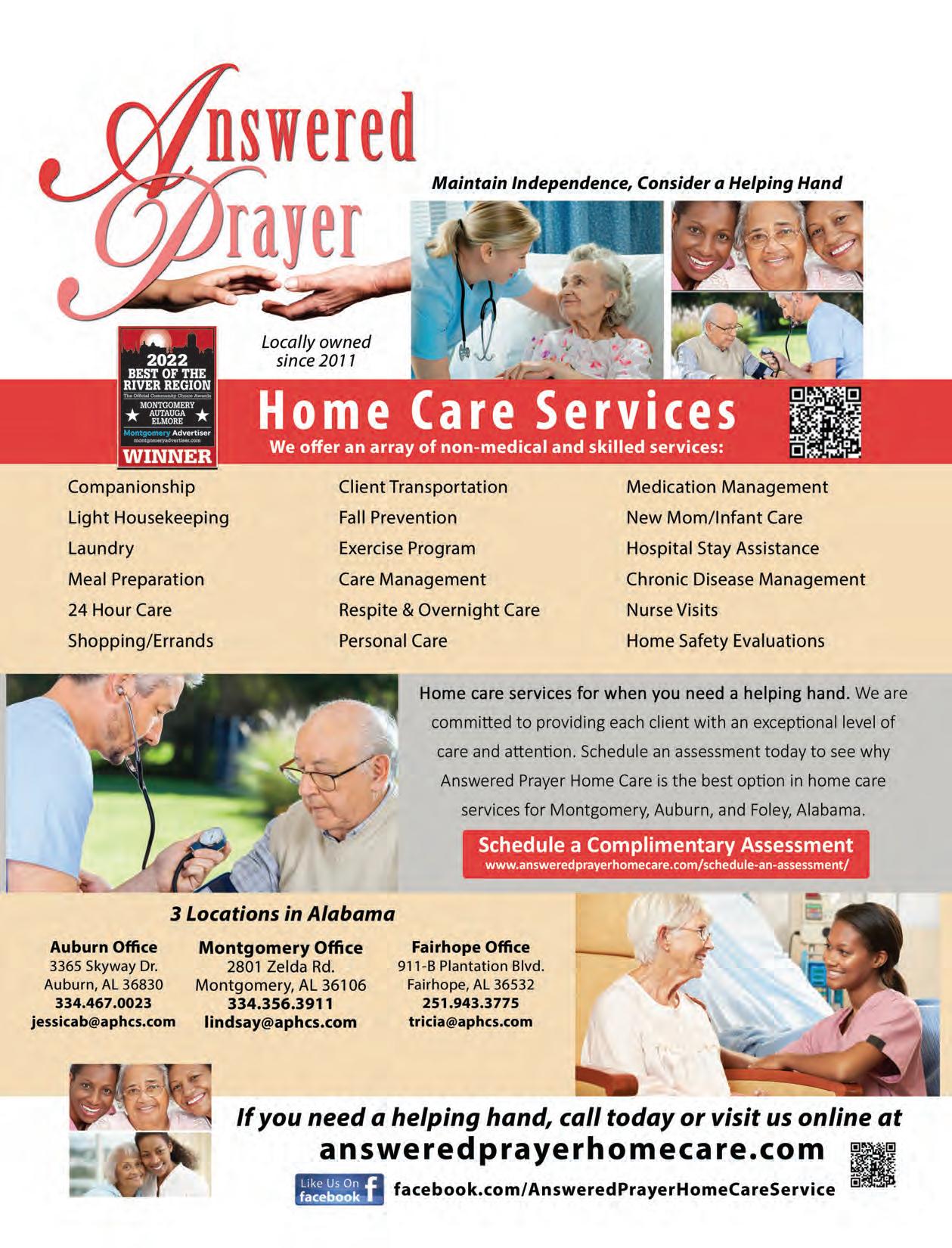


7PM (October 16), 2:30PM (October 19)
Celebrate the music of Broadway and Opera! Some of the most talented singers from the River Region are joining forces to present some of the most exciting songs, arias, ensembles and scenes from some of your favorite performances from the stage! You can purchase your tickets online at https://www.montgomerychorale.org/tickets. Join us in the beautiful Lowder Gallery at the Montgomery Museum of Fine Arts for a concert event you won’t want to miss!
October 10 * 6 PM to 9 PM * Union Station
Indulge in an evening of elegance along the Riverwalk with: Wine Samples from Top Regional & Local Wineries, Delicious Bites from Food & Specialty Vendors, Live Music by Saxophonist BK Jackson & His Band. A perfect night out, this event offers something for everyone.


General admission tickets $10 at the door $5 - seniors and military; 9:00 AM to 8:00 PM
This year’s Holiday Market will feature many returning favorites like Kathy’s Jewelry and Accessories, Clayton & Crume handmade leather goods, and The Artist Tree handmade signage, along with 60+ vendors showcasing gourmet desserts, boutique children’s and women’s apparel, home décor, and much more! Advance tickets are available at select local retailers, including Rosemont Gardens, Heather Pierce Designs, My Kids Attic, Local & Bloom - Pike Road, and gift shops at Baptist Hospitals
Join us for the 6th Annual Parade of Pumpkins in Historic Downtown Prattville from October 18th-October 31st. Festive storefronts, seasonal displays, decorated pumpkins from citizens, and food trucks will transform Historic Downtown.
Please present coupon or mention you saw it in the BOOM! Digital Issue. Offer Expires 10/31/25







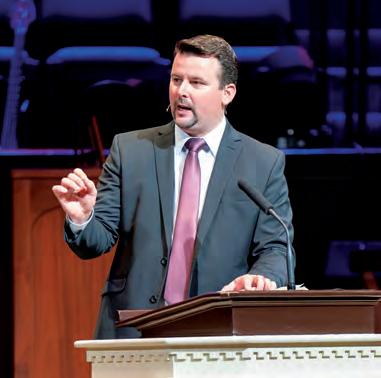




Montgomery Performing Arts Centre * October 11 * 7:30 PM
Experience a live concert experience unlike any other as The Black Jacket Symphony performs The Era of Yacht Rock, featuring classics from Hall & Oates, Steely Dan, Chicago, Kenny Loggins and many more! Over the past ten years, the Black Jacket Symphony has performed over 40 classic rock albums, bringing an incredible night of entertainment to over a million music lovers across the US. It’s a full night of rock and roll magic—plus a visual experience unlike any other.
October 25 * 7:30 PM * MPAC
Ruben Studdard rose to fame as the winner of American Idol Season 2, launching a successful career with hits like “Flying Without Wings” and “Sorry 2004.” He later explored gospel and continues to tour and release music. Tickets: $25 - $50. Visit mpaconline.org/ruben-studdard/
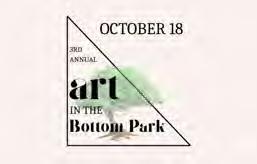

October 18 * 10 AM – 4 PM * Cloverdale-Idlewild Neighborhood
Spend a beautiful day in the park surrounded by incredible local art, live music, and delicious eats from food trucks! We’re expecting 30+ talented local artists showcasing everything from paintings and pottery to jewelry and handmade goods. Bring your friends, family, and neighbors for a fun-filled day celebrating creativity in the heart of our community! Interested in being a participating artist or sponsoring the event? Email us at harvillcreativehouse@gmail.com for more info.
Kimberly is the definition of dependable and compassionate. She doesn’t just show up on time—she shows up with heart. From taking those extra moments to brighten her client’s day with conversation to anticipating needs before they’re even spoken, Kimberly truly exemplifies what it means to be a caregiver. Her client can’t stop sharing how much she adores Kimberly and how deeply cared for she feels every day.
It’s caregivers like Kimberly who remind us why our mission matters. Thank you, Kimberly, for your dedication, kindness, and the lasting impact you make in the lives you touch. We are so grateful to have you on our team! For more information visit www.homecareassistancemontgomery.com.
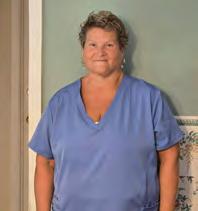
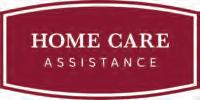



Most children get lead poisoning from paint in homes built before 1978. Keep paint in good condition and use a certified lead contractor to safely perform home renovations if your home was built before 1978.
A blood lead test is the only way to know if your child has lead poisoning. Talk with your child’s doctor about testing, especially at the 1- and 2-year check-up, when children are at greatest risk.
Lead poisoning can cause permanent learning and behavior problems. Follow these steps to stop lead poisoning:
• Practice and teach good handwashing, especially before preparing food and eating.
• Feed your family a low-fat diet high in calcium and iron.
• Damp dust and mop, especially around windows and play areas, to remove lead dust.
• Keep children away from areas with peeling or chipping paint.
JOIN US FOR A NIGHT OF JOY!










When you hear the word cancer, it’s easy to feel overwhelmed. But at Montgomery Cancer Center, we believe every journey should begin with one powerful word: CAN. With leading-edge treatments, nationally respected protocols, and a skilled team that truly cares, you can face this with confidence. You can stay close to home. Most importantly, you can beat cancer— right here.







William Osler, a Canadian physician and one of the founding professors of John Hopkins Hospital once said, "The value of experience is in not seeing much, but in seeing wisely."
My partner, Michael, and I have found that to be true of our relatively new relationship. Both of us were widowed after long marriages to our respective spouses. As former high school classmates, we connected on Facebook several years prior, but after I saw a post about him possibly moving close to where I was living, I contacted him directly and told him he would have a friend when he moved.
We PM'd (private messaged) then talked by phone and video chat and eventually fell in love long distance. Within three months, he'd come to live with me and within seven months, I sold my home, we purchased a home together and moved closer to our hometown.
We naively thought that deep love, our shared background, common interests, age and experience in our former relationships would shield us from the pitfalls many younger first-time partners experience. As it turns out, experience can sometimes work in favor of a new relationship, but it can also work against it when dragging the baggage of expectations, lifelong quirks and habits.
"I think the most important thing in new relationships and living together is to set realistic expectations," says Megan Collins, a licensed marriage and family therapist (LMFT) in Beverly Hills, California. "This will be new and different and will not look like the previous relationship."
Collins adds that there may be some overlap of the previous marriage or partnership; couples should enter into later-in-life relationships with the only expectation that everything will be different. "Your new partner probably will not love or support you the way your deceased partner did," she says. "As with any relationship, it's important to be friends first."



Anne Criss, 81, lives with her husband, Ric, in Surry, Maine. Criss lost her husband, Paul, in 1999. Ric was the couple's good friend and part of a group who sailed with them. "We were really like family," says Criss. Two years after Paul's passing, Criss says the two fell in love. "Ric was good support; he was missing Paul as well."
They were married in 2003 and embarked on a five-year sailing journey. "When you're sailing on a forty-foot boat together, sometimes there's no room for argument. We knew we could only depend on each other, so we learned to cooperate with each other," Criss says of the sometimes stormy and rough seas they encountered during that time. "I think that had a lot to do with bringing us closer, getting us past that giddy part of being in love."

Criss also says she believes their longlasting marriage has worked because they were good friends first. "We knew and got along with each other's families. We had a lot in common and knew what we both wanted and expected from a relationship," she says.
"We also don't ignore Paul and my marriage," Criss says, explaining they brought Paul's ashes on the sailing adventure. "It was something he always wanted to do and didn't get to, so we brought his ashes. We still to this day remember him and laugh about the good times we all had."
Collins says in addition to setting reasonable expectations and being friends, the next most important thing for a healthy relationship is communication. "It's important to communicate your feelings, what you like and don't like and especially what grounds you and makes you feel loved," says Collins.
Collins says it's important to not only communicate your needs, or "love language," but to be curious about your partner's. "A good partner will not only
communicate their needs but also want to learn about the other's as well," says Collins.
Finally, Collins, says it's also about setting boundaries. "Depending on how long the person has lived alone, they may have learned to appreciate alone time," says Collins. "Both partners need to learn to communicate those wants and learn what the other needs to ground themselves."
Dr. Harris Stratyner, Ph.D., of Stratyner & Associates in New York and professor of psychology in psychiatry at Mount Sinai School of Medicine, advises new partners in a later-in-life relationship not to discount how big the small things can become.
"I had one couple who broke up because they didn't like the same television shows," says Stratyner. "It's important to have things in common, but it's also important to approach life with humor and sometimes not take life so seriously."
Stratyner says just as with new first-time younger couples, the biggest issue that
comes up for older couples is money. "Couples need to establish who will pay the bills, how both will contribute, as well as not overlook the issue of planned estates and wills," he explains. "One partner who has children may say, 'my children are getting the house or property' while the other partner may say, 'we are married or living together, that should change now.'"
Additionally, Stratyner says partners must be willing to discuss and possibly compromise on religious beliefs and observance and political views, "especially in this climate," he says. "If each partner doesn't have an open mind, it's not going to work."
One thing Stratyner says many new partners who were previously widowed may overlook are their fears about losing their new partner. "If a person took care of their ailing spouse before they died, they may have fears about doing that in a new relationship," says Stratyner.
He says these matters should be discussed prior to marriage or moving in with a new partner, preferably with a counselor who specializes in couples' counseling.
Michael and I work well in such things as finances and home responsibilities, but found ourselves needing assistance in comparing our previous marriages, setting boundaries for alone time and communication.
When my late husband, Dale, and I married, the church in which we took our vows required us to attend several weeks of couples' counseling. Although Dale and I had been dating for seven years, the counseling helped us establish better lines of communication, expectations and boundaries.
Michael and I admittedly may have jumped straight from giddy in love to living together, so we decided couples' counseling could help us go back and solidify the foundation.
So far, it appears to be working.
Courtesy of nextavenue.org.
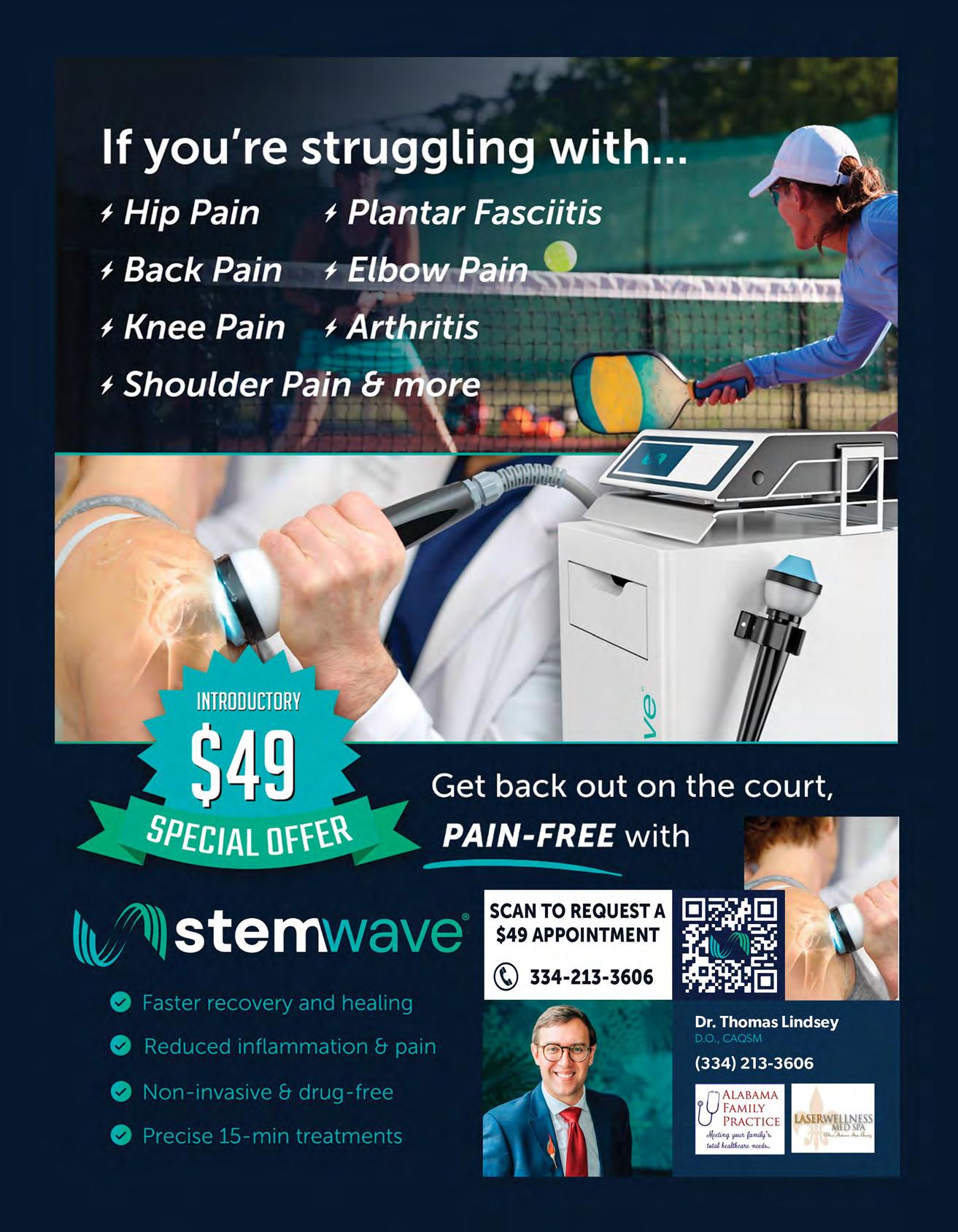

One hundred years ago, tragedy struck at the site of what is now Mammoth Cave National Park. Nevertheless, the heartbreaking incident led to nationwide recognition of the astonishing cave system and the surrounding area.
With over 420 miles of mapped passageways, it’s the largest known cave system on the planet and a mere 6-hour drive from Montgomery up I-65. Exit 48 leads to Hwy 255 and, just a few miles down the road, the iconic brown National Park entrance sign.

Although entry to the park is free, cave tours are not. Tickets can be purchased online or at the park. However, in-person availability is not guaranteed as tours may sell out, so plan ahead.
One of the most popular tours is the Historic Tour, a 2-hour/2-mile walk that “descends to much tighter places deep inside the cave,” according to the park’s website (www.nps.gov/maca/index.htm).
But with more than 500 stairs and several steep sections, this route might

prove challenging for anyone with mobility issues. During our last summer visit, we tackled the shorter Discovery Self-Guided Tour. Although not available year-round, visitors can leisurely stroll through a mostly flat 0.75-mile portion of the cave – once you navigate ‘only’ 135 stairs at the entrance, that is.
The Discovery Self-Guided Tour is just $6 with the seniors America the Beautiful
pass, whereas the Historic Tour is twice that. There is also a short downhill path (about 2/10 mile) to reach the entrance from the visitor center, but the return walk up is not too difficult.
Before entering the cave, a ranger will explain cave etiquette and safety guidelines, all instructions being rather obvious (e.g., and I’m paraphrasing here: don’t mess with the bats; keep your paws off the rocks and walls; leave your lunch outside).
And watch your step – it’s dark down there (much darker than in the accompanying photo). It’s also cool – both impressive and chilly.
The temperature dropped by over 40 degrees as we descended the stairs in July. So, bring a light sweater or jacket if you can’t tolerate 50 degrees for an hour or so in short sleeves. After exiting the caves, all visitors are required to wipe their feet on a bio-security mat to help reduce the spread of White-nose syndrome, a fatal fungal disease affecting the cave’s hibernating bats.
anyone interested in the history of the park, the short (0.3-mile) Sand Cave Trail is a must. Although access to the actual cave is closed to visitors, the entrance can be viewed from the path.
It was there that amateur caver Floyd Collins ventured below ground in 1925, only to become pinned by a falling rock. Crews worked for 18 desperate days to free him, while the nation followed the ordeal through newspaper reports and radio bulletins. Thousands flocked to the site, drawn by both hope for a rescue and morbid curiosity.
Collins died just two days before searchers finally reached his underground tomb. Standing near the cave today, one can


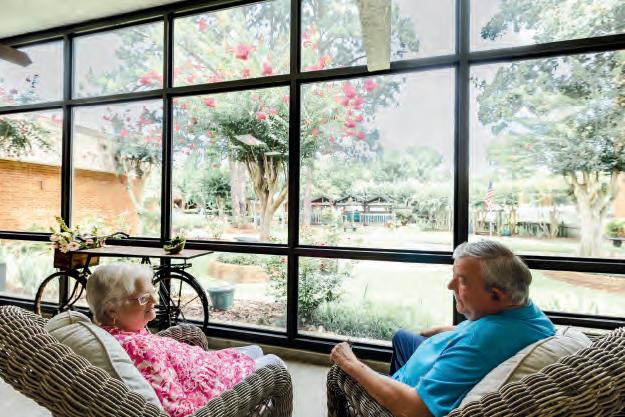
only shudder at the isolated torment and despair he must have suffered as darkness, thirst, and hunger slowly engulfed him.
There are more tours listed on the park website – some longer, some shorter than the two mentioned above. So select your tour(s) ahead of time to match your interests and ability.
But not all Mammoth Cave adventures lie underground. The park has around 85 miles of hiking trails throughout its 52,000 acres in south-central Kentucky, with some leading to rivers, springs, and sinkholes. For
The tragedy that gripped the nation and propelled Kentucky’s subterranean wonder into the national spotlight ultimately inspired Congress to designate the site as Mammoth Cave National Park in 1941.
Nick Thomas teaches at Auburn University at Montgomery and has written features, columns, and interviews for many newspapers and magazines. His hiking column describes short trails, hikes, and walks from around the country that seniors might enjoy.
See www.ItsAWonderfulHike.com.








Martha’s story is one of faith, resilience, and deep compassion. A longtime Montgomery resident, she treasures the city’s small-town warmth and connections. Her 27-year career in community banking not only built her confidence but also taught her the importance of caring for others—a passion she carried into nearly two decades of service with Women of Hope, supporting women through breast cancer journeys. When Martha faced her own diagnosis, her faith and community gave her strength, transforming hardship into testimony. Married to Jim for 58 years, she credits laughter, support, and shared growth as the keys to their lasting bond. For her, “aging with purpose” means staying curious, grateful, and focused on what truly matters: faith, love, and giving yourself away.
BOOM: You’ve called Montgomery home for many years. What do you love most about being part of this community?
Martha: I love living in a large city with all the amenities, but it has a smalltown feel. I enjoy the accessibility, and you can get across town quickly. The friendliness gives you a small-town feeling. You can’t go anywhere that you don’t run into someone you know from some aspect of your life. I love that you can go into a small boutique and they say, "We’ve been missing you, Martha."
BOOM: You spent 27 years in community banking, a role that allowed you to walk alongside people in their best and most challenging moments. How did that career shape you?
Martha: My 27 years in banking and investments have certainly helped shape me into the person I am today. Walking into the bank without banking experience, I was relatively shy. I was eager to learn and knew I loved being with people, so it was the perfect career for me. I was fortunate to work in an established neighborhood with wonderful elderly people. I would often go to their homes to do their investments. The relationships began
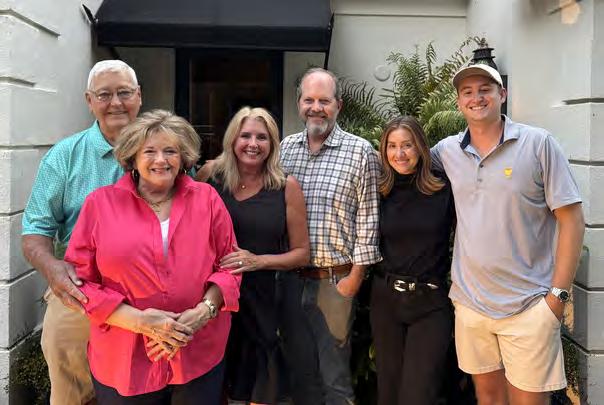
to form, and it became my mission to care for others. I frequently attended funerals, as it was more than a job to me.
As my career helped develop my confidence, I was able to dedicate 19 years of my time to helping raise funds for Women of Hope, a non-profit organization dedicated to breast cancer awareness. My compassion is deeper, and the fact that I am an advocate and speak up for what I think is right comes from lessons I learned in banking.
BOOM: Your faith clearly plays a central role in your life. How has it guided you through both everyday living and life’s biggest challenges?
Martha : I have always thought how blessed I was to be born into a Christian family that attended church every Sunday and exemplified how to share what you had and love your neighbor. Even if it was just vegetables from the garden or a watermelon from the patch.
At the age of 12, I became ill with Rheumatic fever and spent much of the sixth grade on a cot in the back of the classroom. I never thought I would live, but through the illness I experienced, God’s provision and healing, and the love from so many people. Recently, I was diagnosed with breast cancer and once again experienced God’s presence in mighty ways. I have discovered that when the big challenges come, that is when His presence is seen more fully and completely. We serve a mighty God.
BOOM: You’ve been married to Jim for 58 years. What’s the secret to growing together and still “living big” after all these years?
Martha: Allow your love to grow and support each other as you each change along the way. Try new things together. Have give and take. Know the other so well you supply their needs without them asking. Don’t take everything so seriously. Remember the hard times and how you got through them. Laugh and kid each other and hold hands a lot.
BOOM: You once found yourself supporting women through Women of Hope, and now you’ve been “sitting at the table” with them. What has it meant to walk both sides of that journey?
Martha: For years, I have heard about breast cancer and learned head knowledge. Experiencing it is a totally different story. I am a giver, and it has been a different experience to receive so much from so many. I'm very grateful. I've experienced it from my heart now and not just my head.
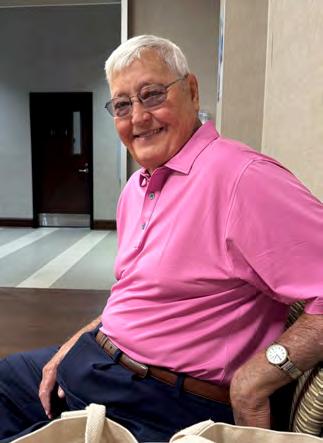
BOOM : October is Breast Cancer Awareness Month, and after supporting others for nearly two decades, you recently faced breast cancer yourself. How did that change your perspective?
Martha: I have experienced breast cancer close up and now understand the terminology better. I know what it is like to go through tests and await results, and I know how to be more empathetic with others. I am able to share my personal journey to help another along the way and be a more powerful witness.
BOOM: You’ve said your friend Patti called the day of your mastectomy “the worst day of your life, but also the best.” How has that moment shaped the way you see God’s presence in hardship?
Martha: Patti said this after I expressed all the blessings I received from so many on the day of surgery. Ministers, doctors, nurses, family, Sunday School class, and friends were so supportive and loving. I take all the special words and care I received that day and hold each one in my mind and heart. God made what could have been the worst day of my life to be the best day of my life.
BOOM: Women of Hope has been a big part of your life for 19 years. For readers who may not know, what does the organization do, and

Martha: If you hear of someone recently diagnosed, please tell them about WOH. Ask permission from the newly diagnosed, and a survivor will contact them and arrange a canvas bag delivery filled with goodies and information useful for their journey. We are available to walk alongside them during their journey. One of the main things WOH offers is a monthly support group, held at Frazer Church on the second Tuesday of each month at 5:30. A healthcare professional or a survivor
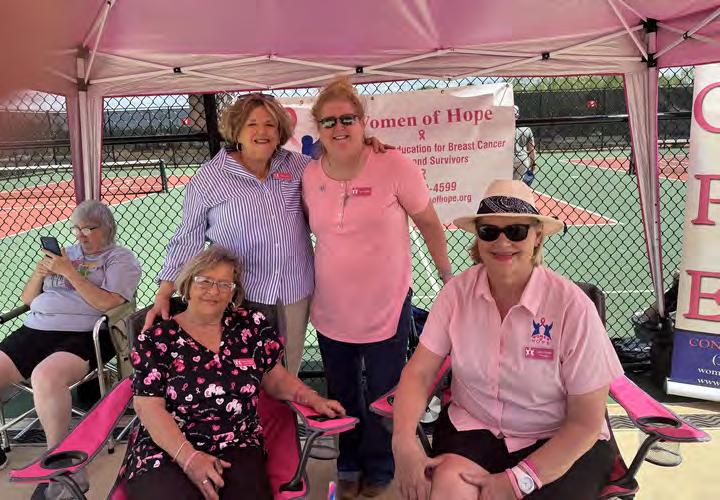
will share their inspiring story. We share a light meal prior to meeting, and much support happens around the table. We have events throughout the year, especially in October. We are a non-profit, so any money received goes for our mission, and no one is paid.
BOOM: What’s one story or experience from Women of Hope that stands out as especially meaningful to you?
Martha: The story that stands out in my mind was the first event of Women of Hope, a fashion show and meal held at a local restaurant.
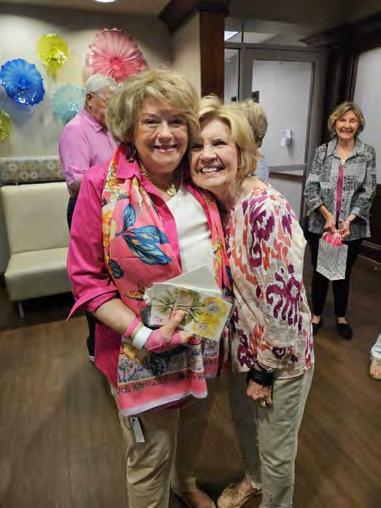
Maria Ashmore, the founder of WOH, spoke of her lonely breast cancer journey and how she envisioned a support group so no one would have to walk this path alone. Although I wasn’t a survivor then, I knew I wanted to be a part of this organization that was being formed and give of my time. I had lost a cousin at a young age to breast cancer, and it had impacted my life, and my friend, Patti, with whom I worked at the bank, had recently been diagnosed. Nineteen years later, my passion is still strong for the mission of WOH as I see how many lives are touched and changed for the better. Advancements in breast cancer treatments have come a long way in these 19 years.
BOOM: How can our readers support Women of Hope or get involved, especially during Breast Cancer Awareness Month?
Martha: Much emphasis is placed on this dreaded disease during the month of October. There will be a significant focus on valuable information and numerous events to educate the public. One in eight will get a diagnosis, and that increases to one in six as you age. Early detection is extremely important, and one of the primary missions of WOH is to educate. In October, we have a local oncologist to come and speak at our meeting at Frazer about the latest information on breast cancer. My advice is to become informed and be an advocate for breast cancer, and contact us if you have a family member or friend diagnosed. We also have volunteers who haven't had breast cancer come along and support us with their attendance at events and meetings. We call them our encouragers. You can also support us financially, as all money goes directly to our mission.
BOOM: You and Jim stay active socially, even traveling with the 60+ Golf Association. How important is community and staying connected at this stage of life?
Martha: One of my goals when I retired was to meet new friends, and that is what we have done with the 60+ Golf Association. We travel to various cities to play golf and socialize together. These are wonderful people we would have never known if not for our common interest.
BOOM: During the COVID-19
pandemic, you picked up painting and have now created hundreds of cards to encourage others. What do you enjoy most about this new hobby?
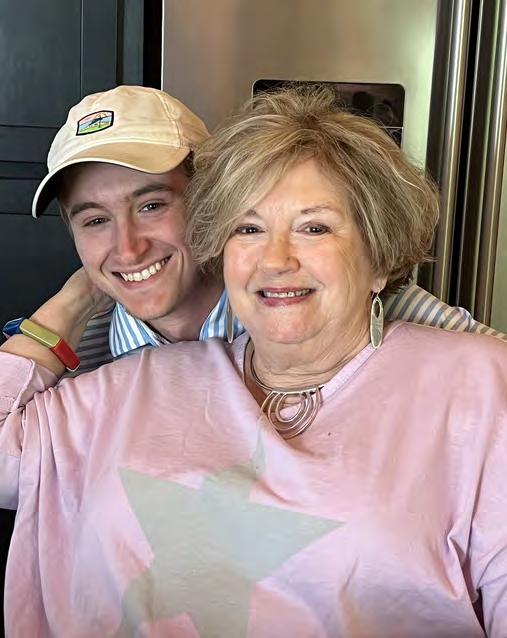
Martha: Watercolors bring me joy, relaxation, and fulfillment as I hopefully lift another with my little doodles. Watercolors helped me through a difficult time in my life and have now become a part of who I am today. We are never too old to learn something new. I recently painted over 25 for my classmates as we met for a reunion. Life is all about giving yourself away.
BOOM: You even started writing letters to your grandson, Jack, and now to your whole family. What do those letters mean to you, and what do you hope they mean to them?


Martha: I started writing a Christmas letter to our only grandson when he was five. It meant so much to him that he jumped into my arms, and we both had tears. I decided to expand this little Christmas project, and it has now become a family tradition. It is amazing
the love felt in the room as the letters are opened and read individually. It goes to show that it is the little things that matter. I hope this tradition is carried on down the road. I hope someone reading this will be inspired to start this tradition in their family. The blessings will flow, I promise you.
BOOM: You’ve said some people age and feel they’ve “done everything,” but that’s not you. What keeps you curious and eager to keep living fully?
Martha: Life is so full of adventure. Just open your eyes and your heart as you go out into the world each day. Be unafraid to be your unique self. When I meet a new person and we just hit it off and have deep conversations, I often call them divine appointments. Life is a beautiful tapestry. One side is a mess, but flip it over and it is beautiful.
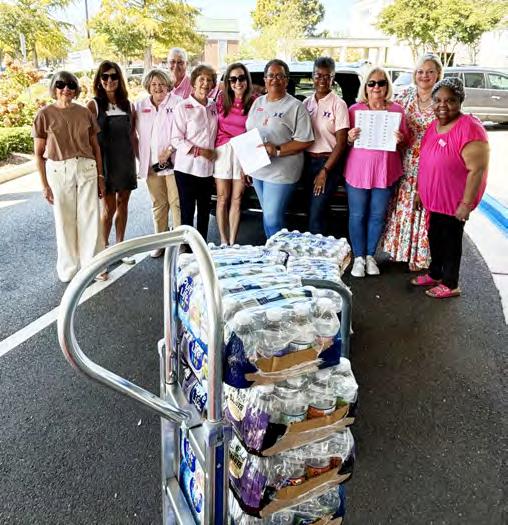
Best advice you've heard or said. Persistence wears down resistance.
One thing you never leave home without.
Lip Stick
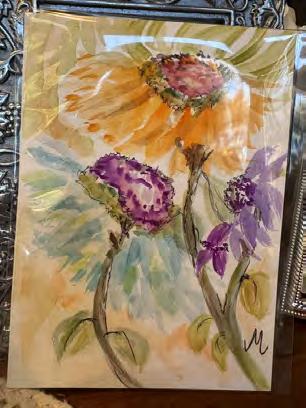
Favorite local restaurant. Sinclair’s
One song that lifts your spirits. Believe by Brooks and Dunn.
Dream trip still on your list. Family vacation (anywhere).
Destination is not important, just time together.
Best part of being a grandmother. Seeing the growth in my grandson in many different areas: character, manners, work ethic, spiritually, and honoring his heritage,
BOOM: Finally, what does “aging with purpose” mean to you — especially now, after facing breast cancer and continuing to give back so generously?
Martha: Don’t let bumps in the road get you off track. Look at it as a learning moment and don’t let it define you. Be positive and grateful for each day. I think my motto is: Keep the main thing the main thing. We all have to determine what that is to each one of us.
Favorite way to spend a Saturday. Sharing TV time with my husband, watching a golf tournament
Three words friends would use to describe you. Compassionate, advocate, and encourager.
We want to thank Martha for sharing her story with us this month. If you have comments or suggestions about our cover profiles, including nominating someone, please text Jason Watson at 334.328.5189 or email jason@riverregionboom.com.
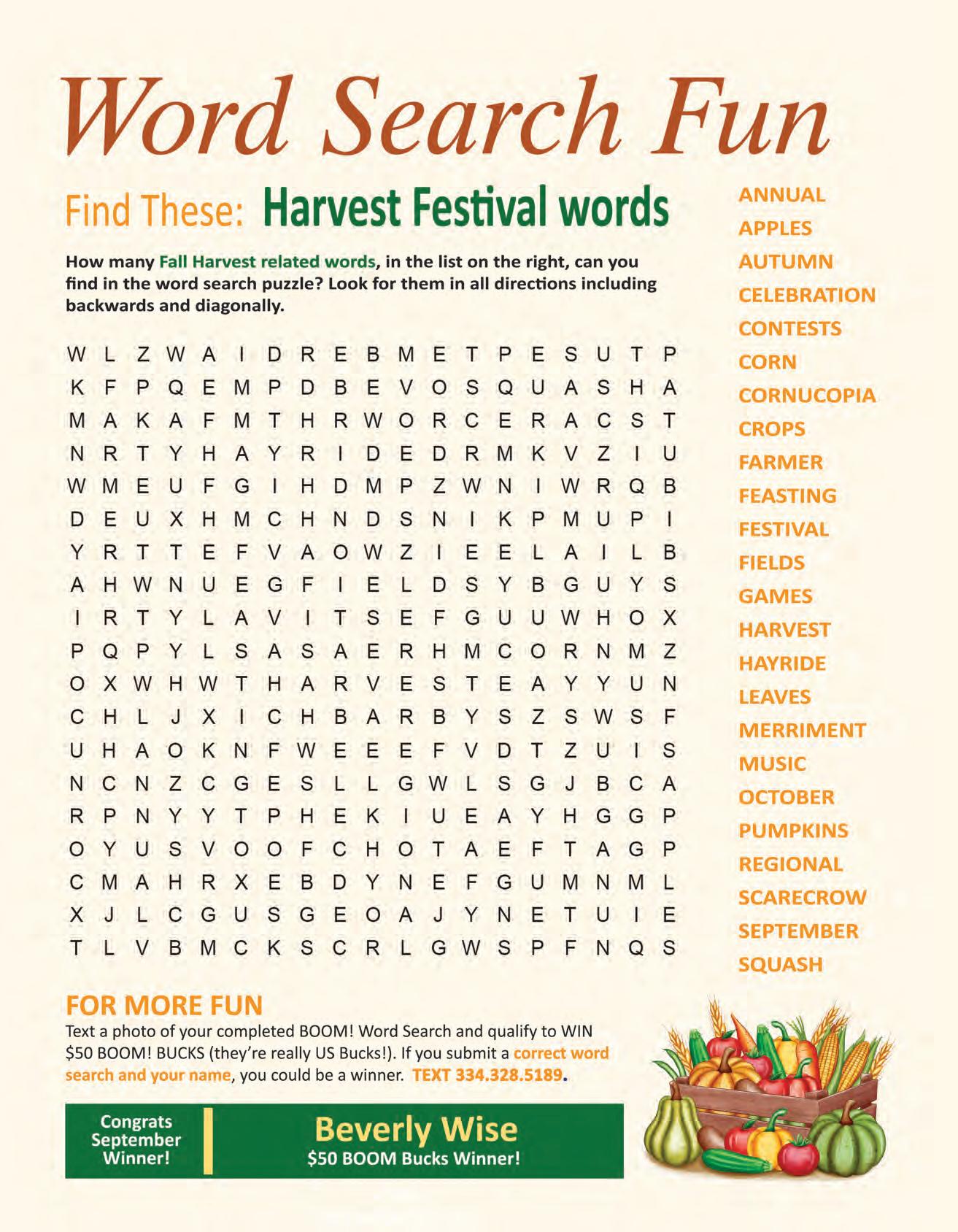







Can you afford to retire? The pandemic has pushed many people to confront this question earlier than they may have planned. The answer may be more complicated than you think and an incorrect answer could be costly. To correctly answer the question, it may help to build a retirement income and expenses pyramid.
Longevity risk is one reason that the answer is complicated. Many people retiring today live twenty-five years or longer after they retire; think of that as being unemployed for 25 years. In addition, that twenty-five-year period is filled with three different phases with different sets of expenses: the Go-Go years, the Slow-Go years and the No-Go years. Another complication is that your lifestyle when you retire may be totally different, with a different set of expenses; it’s a whole new budget. Finally, your sources of income are likely to be different and subject to new sets of risks.
On Wednesday, October 29th from noon to 1:30 p.m. Susan Moore of Moore Wealth Management, Inc. will be conducting a complimentary webinar that covers how to build your pyramid, estimating what your income and expenses will be during retirement. There will be both a live and recorded version. Please call the Moore Wealth Management office for further information or reservations at 256.234.2761 or email sarah@ moorewealthmanagement.com. If you miss the webinar, we also offer free consultations that are without obligation.
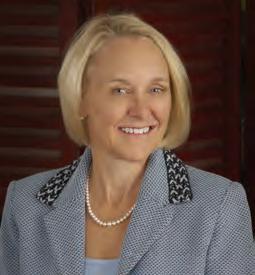
pensions. This involves a whole set of questions: when to take Social Security to maximize it for your circumstances; when and how to take income from the annuities; and which pension option to take and is your pension safe (is it at risk because of underfunding)?

A pyramid approach attempts to prioritize the sources of income and expenses. First, you build the foundation of the pyramid with your guaranteed sources of income which include Social Security, some types of annuities and
Once you’ve determined the guaranteed sources of income that make up the foundation, then you have to budget and figure out your essential expenses, which include food, housing, healthcare and taxes. These expenses may vary widely in the three phases of Go-Go, SlowGo and No-Go. This too involves a whole set of questions: how to maximize your healthcare coverage and minimize your costs; can you afford to age in place or do you need to plan to downsize into independent or assisted living options; and how to minimize taxes on Social Security and avoid higher Medicare premiums.
Then you build the middle level of the pyramid which includes your variable sources of income from savings and investment portfolios and your
desired expenses like vacations, hobbies, entertainment and taking care of family. Like the essential expenses, these may vary widely depending up on the three phases. A portfolio producing an income is subject to different risks than one in which you are accumulating assets. Conventional wisdom was that a safe withdrawal rate from a portfolio was 4%; new studies show that in a low interest rate world the “new” safe withdrawal rate is 2.5% to 3%.¹ In addition, a portfolio producing an income is subject to greater risks of sustained losses than a portfolio providing no distributions.
Finally, you are ready to build the top of the pyramid which include your legacy plans: helping to fund grandchildren’s education, gifts to family while you’re alive and at your death; and philanthropic giving while you’re alive and at your death. These should be funded with your longer-term holdings or illiquid investments.
Retiring is complicated. The old adage applies: if you fail to plan, you plan to fail. Build your pyramid!
Susan Clayton Moore, J.D., is a financial advisor and wealth manager of Moore Wealth Management, Inc., with offices Montgomery and Alexander City, AL. Susan has over $150 million in assets (as of 9.1.24) under management through Kestra Financial and has been a financial planner for over 40 years. Contact Susan at 256.234.2761. Email contact is susan@moorewealthmanagement.com.
The opinions expressed in this commentary are those of the author and may not necessarily reflect those held by Kestra Investment Services, LLC or Kestra Advisory Services, LLC. This is for general information only and is not intended to provide specific investment advice or recommendations for any individual. It is suggested that you consult your financial professional, attorney or tax advisor regarding your individual situation. Securities offered through Kestra Investment Services, LLC (Kestra IS), member FINRA/SIPC. Investment Advisory Services offered through Kestra Advisory Services, LLC (Kestra AS), an affiliate of Kestra IS. Kestra IS or Kestra AS are not affiliated with Moore Wealth Management, Inc. https://www. kestrafinancial.com/disclosures
